Cisco SG350X-48-K9 Stackable Managed Switch with 48 Gigabit Ethernet (GbE) Ports, 2 x 10G Combo + 2 x SFP+
- Mã sản phẩm: SG350X-48-K9
- Xuất xứ: Trung Quốc
- Bảo hành: 12 tháng
- Kho hàng: Đặt hàng
- CẤU HÌNH CỔNG ETHERNET: 48 cổng 10/100/1000, đường lên 4 x 10G (SFP +)
- CẤU HÌNH VÀ ĐIỀU KHIỂN: Có thể xếp chồng lên nhau (4 thiết bị), WebUI trên hộp, CLI, SNMP, Cisco FindIT Network Manager, PnP, Auto Smartports, tự động phát hiện, triển khai không chạm
- CÁC TÍNH NĂNG CỦA L2 + / L3: Định tuyến tĩnh, QoS, giọng nói / khách VLAN, GVRP, MSTP, IGMP rình mò, danh sách kiểm soát truy cập dựa trên thời gian
- BẢO MẬT NÂNG CAO: 802.1x, bao gồm DVA, Xác thực dựa trên web, Liên kết IP / MAC, VLAN Edge riêng, Bảo mật IPv6 First-Hop, Bảo vệ nguồn IP
- AN TÂM: Bảo hành trọn đời có giới hạn, thay thế vào ngày làm việc tiếp theo, một năm hỗ trợ kỹ thuật và sửa lỗi phần mềm miễn phí trong thời hạn bảo hànhHotline: 0888342020
Feature
Description
Performance
Switching capacity and forwarding rate
All switches are wire speed and nonblocking
Model Name
Capacity in Millions of Packets per Second (mpps) (64-byte packets)
Switching Capacity in Gigabits per Second (Gbps)
CBS350-8T-E-2G
14.88
20.0
CBS350-8P-2G
14.88
20.0
CBS350-8P-E-2G
14.88
20.0
CBS350-8FP-2G
14.88
20.0
CBS350-8FP-E-2G
14.88
20.0
CBS350-8S-E-2G
14.88
20.0
CBS350-16T-2G
26.78
36.0
CBS350-16T-E-2G
26.78
36.0
CBS350-16P-2G
26.78
36.0
CBS350-16P-E-2G
26.78
36.0
CBS350-16FP-2G
26.78
36.0
CBS350-24T-4G
41.66
56.0
CBS350-24P-4G
41.66
56.0
CBS350-24FP-4G
41.66
56.0
CBS350-24S-4G
41.66
56.0
CBS350-48T-4G
77.38
104.0
CBS350-48P-4G
77.38
104.0
CBS350-48FP-4G
77.38
104.0
CBS350-24T-4X
95.23
128.0
CBS350-24P-4X
95.23
128.0
CBS350-24FP-4X
95.23
128.0
CBS350-48T-4X
130.94
176.0
CBS350-48P-4X
130.94
176.0
CBS350-48FP-4X
130.94
176.0
CBS350-8MGP-2X
46.13
62.0
CBS350-8MP-2X
29.76
80.0
CBS350-24MGP-4X
104.16
140.0
CBS350-12NP-4X
148.80
200.0
CBS350-24NGP-4X
142.85
192.0
CBS350-48NGP-4X
178.56
240.0
CBS350-8XT
119.05
160.0
CBS350-12XS
178.56
240.0
CBS350-12XT
178.56
240.0
CBS350-16XTS
238.08
320.0
CBS350-24XS
240.00
480.0
CBS350-24XT
240.00
480.0
CBS350-24XTS
240.00
480.0
CBS350-48XT-4X
755.81
1,040.0
Layer 2 Switching
Spanning Tree Protocol
Standard 802.1d Spanning Tree support
Fast convergence using 802.1w (Rapid Spanning Tree [RSTP]), enabled by default
Multiple Spanning Tree instances using 802.1s (MSTP); 8 instances are supported
Per-VLAN Spanning Tree Plus (PVST+) and Rapid PVST+ (RPVST+); 126 instances are supported
Port grouping/link aggregation
Support for IEEE 802.3ad Link Aggregation Control Protocol (LACP)
● Up to 8 groups● Up to 8 ports per group with 16 candidate ports for each (dynamic) 802.3ad link aggregationVLAN
Support for up to 4,094 VLANs simultaneously
Port-based and 802.1Q tag-based VLANs; MAC-based VLAN; protocol-based VLAN; IP subnet-based VLAN
Management VLAN
Private VLAN with promiscuous, isolated, and community port
Private VLAN Edge (PVE), also known as protected ports, with multiple uplinks
Guest VLAN, unauthenticated VLAN
Dynamic VLAN assignment via RADIUS server along with 802.1x client authentication
CPE VLAN
Voice VLAN
Voice traffic is automatically assigned to a voice-specific VLAN and treated with appropriate levels of QoS. Voice Services Discovery Protocol (VSDP) delivers network wide zero-touch deployment of voice endpoints and call control devices
Multicast TV VLAN
Multicast TV VLAN allows the single multicast VLAN to be shared in the network while subscribers remain in separate VLANs. This feature is also known as Multicast VLAN Registration (MVR)
VLAN Translation
Support for VLAN One-to-One Mapping. In VLAN One-to-One Mapping, on an edge interface customer VLANs (C-VLANs) are mapped to service provider VLANs (S-VLANs) and the original C-VLAN tags are replaced by the specified S-VLAN
Q-in-Q
VLANs transparently cross a service provider network while isolating traffic among customers
Selective Q-in-Q
Selective Q-in-Q is an enhancement to the basic Q-in-Q feature and provides, per edge interface, multiple mappings of different C-VLANs to separate S-VLANs
Selective Q-in-Q also allows configuring of Ethertype (Tag Protocol Identifier [TPID]) of the S-VLAN tag
Layer 2 protocol tunneling over Q-in-Q is also supported
Generic VLAN Registration Protocol (GVRP)/Generic Attribute Registration Protocol (GARP)
Generic VLAN Registration Protocol (GVRP) and Generic Attribute Registration Protocol (GARP) enable automatic propagation and configuration of VLANs in a bridged domain
Unidirectional Link Detection (UDLD)
UDLD monitors physical connection to detect unidirectional links caused by incorrect wiring or cable/port faults to prevent forwarding loops and black holing of traffic in switched networks
Dynamic Host Configuration Protocol (DHCP) Relay at Layer 2
Relay of DHCP traffic to DHCP server in different VLAN; works with DHCP Option 82
Internet Group Management Protocol (IGMP) versions 1, 2, and 3 snooping
IGMP limits bandwidth-intensive multicast traffic to only the requesters; supports 2K multicast groups (source-specific multicasting is also supported)
IGMP Querier
IGMP querier is used to support a Layer 2 multicast domain of snooping switches in the absence of a multicast router
IGMP proxy
The IGMP proxy provides a mechanism for multicast forwarding based on IGMP membership information without the need for more complicated multicast routing protocols.
Head-of-Line (HOL) blocking
HOL blocking prevention
Loopback Detection
Loopback detection provides protection against loops by transmitting loop protocol packets out of ports on which loop protection has been enabled. It operates independently of STP
Layer 3
IPv4 routing
Wirespeed routing of IPv4 packets
Up to 990 static routes and up to 128 IP interfaces
IPv6 routing
Wirespeed routing of IPv6 packets
Layer 3 Interface
Configuration of Layer 3 interface on physical port, Link Aggregation (LAG), VLAN interface, or loopback interface
Classless Interdomain Routing (CIDR)
Support for classless interdomain routing
RIP v2
Support for Routing Information Protocol version 2 for dynamic routing
Policy-Based Routing (PBR)
Flexible routing control to direct packets to different next hop based on IPv4 or IPv6 Access Control List (ACL)
DHCP Server
Switch functions as an IPv4 DHCP server serving IP addresses for multiple DHCP pools/scopes
Support for DHCP options
DHCP relay at Layer 3
Relay of DHCP traffic across IP domains
User Datagram Protocol (UDP) relay
Relay of broadcast information across Layer 3 domains for application discovery or relaying of Bootstrap Protocol (BOOTP)/DHCP packets
Stacking
Hardware stacking
Up to 4 units in a stack. Up to 200 ports managed as a single system with hardware failover
Stacking is supported on the following models
CBS350-24T-4X, CBS350-24P-4X, CBS350-24FP-4X, CBS350-48T-4X, CBS350-48P-4X, CBS350-48FP-4X
CBS350-8MP-2X, CBS350-24MGP-4X, CBS350-12NP-4X, CBS350-24NGP-4X, CBS350-48NGP-4X
CBS350-8XT, CBS350-12XS, CBS350-12XT, CBS350-16XTS, CBS350-24XS, CBS350-24XT, CBS350-24XTS, CBS350-48XT-4X
High availability
Fast stack failover delivers minimal traffic loss. Support link aggregation across multiple units in a stack
Plug-and-play stacking configuration/management
Active/standby for resilient stack control
Autonumbering
Hot swap of units in stack
Ring and chain stacking options, auto stacking port speed, flexible stacking port options
High-speed stack interconnects
Cost-effective high-speed 10G fiber interfaces.
Security
Secure Shell (SSH) Protocol
SSH is a secure replacement for Telnet traffic. Secure Copy Protocol (SCP) also uses SSH. SSH v1 and v2 are supported
Secure Sockets Layer (SSL)
SSL support: Encrypts all HTTPS traffic, allowing highly secure access to the browser-based management GUI in the switch
IEEE 802.1X (Authenticator role)
802.1X: Remote Authentication Dial-In User Service (RADIUS) authentication and accounting, MD5 hash; guest VLAN; unauthenticated VLAN, single/multiple host mode and single/multiple sessions
Supports time-based 802.1X; dynamic VLAN assignment; MAC authentication
IEEE 802.1X supplicant
A switch can be configured to act as a supplicant to another switch. This enables extended secure access in areas outside the wiring closet (such as conference rooms)
Web-based authentication
Web-based authentication provides network admission control through web browser to any host devices and operating systems
STP Bridge Protocol Data Unit (BPDU) Guard
A security mechanism to protect the network from invalid configurations. A port enabled for BPDU Guard is shut down if a BPDU message is received on that port. This avoids accidental topology loops
STP Root Guard
This prevents edge devices not in the network administrator’s control from becoming Spanning Tree Protocol root nodes
STP loopback guard
Provides additional protection against Layer 2 forwarding loops (STP loops)
DHCP snooping
Filters out DHCP messages with unregistered IP addresses and/or from unexpected or untrusted interfaces. This prevents rogue devices from behaving as DHCP Servers.
IP Source Guard (IPSG)
When IP Source Guard is enabled at a port, the switch filters out IP packets received from the port if the source IP addresses of the packets have not been statically configured or dynamically learned from DHCP snooping. This prevents IP address spoofing.
Dynamic ARP Inspection (DAI)
The switch discards ARP packets from a port if there are no static or dynamic IP/MAC bindings or if there is a discrepancy between the source or destination addresses in the ARP packet. This prevents man-in-the-middle attacks.
IP/MAC/Port Binding (IPMB)
The preceding features (DHCP Snooping, IP Source Guard, and Dynamic ARP Inspection) work together to prevent DOS attacks in the network, thereby increasing network availability
Secure Core Technology (SCT)
Makes sure that the switch will receive and process management and protocol traffic no matter how much traffic is received
Secure Sensitive Data (SSD)
A mechanism to manage sensitive data (such as passwords, keys, and so on) securely on the switch, populating this data to other devices, and secure autoconfig. Access to view the sensitive data as plaintext or encrypted is provided according to the user-configured access level and the access method of the user.
Trustworthy systems
Trustworthy systems provide a highly secure foundation for Cisco products
Run-time defenses (Executable Space Protection [X-Space], Address Space Layout Randomization [ASLR], Built-In Object Size Checking [BOSC])
Private VLAN
Private VLAN provides security and isolation between switch ports, which helps ensure that users cannot snoop on other users’ traffic; supports multiple uplinks
Layer 2 isolation Private VLAN Edge (PVE)
PVE (also known as protected ports) provides Layer 2 isolation between devices in the same VLAN, supports multiple uplinks
Port security
Ability to lock source MAC addresses to ports and limits the number of learned MAC addresses
RADIUS/TACACS+
Supports RADIUS and TACACS authentication. Switch functions as a client
RADIUS accounting
The RADIUS accounting functions allow data to be sent at the start and end of services, indicating the amount of resources (such as time, packets, bytes, and so on) used during the session
Storm control
Broadcast, multicast, and unknown unicast
DoS prevention
Denial-of-Service (DOS) attack prevention
Multiple user privilege levels in CLI
Level 1, 7, and 15 privilege levels
ACLs
Support for up to 1,024 rules
Drop or rate limit based on source and destination MAC, VLAN ID, IPv4 or IPv6 address, IPv6 flow label, protocol, port, Differentiated Services Code Point (DSCP)/IP precedence, Transmission Control Protocol/User Datagram Protocol (TCP/UDP) source and destination ports, 802.1p priority, Ethernet type, Internet Control Message Protocol (ICMP) packets, IGMP packets, TCP flag; ACL can be applied on both ingress and egress sides
Time-based ACLs supported
Quality of Service
Priority levels
8 hardware queues
Scheduling
Strict priority and Weighted Round-Robin (WRR)
Class of service
Port based; 802.1p VLAN priority-based; IPv4/v6 IP precedence/Type of Service (ToS)/DSCP-based; Differentiated Services (DiffServ); classification and remarking ACLs, trusted QoS
Queue assignment based on DSCP and class of service (802.1p/CoS)
Rate limiting
Ingress policer; egress shaping and rate control; per VLAN, per port, and flow based; 2R3C policing
Congestion avoidance
A TCP congestion avoidance algorithm is required to minimize and prevent global TCP loss synchronization
iSCSI traffic optimization
A mechanism for giving priority to iSCSI traffic over other types of traffic
Standards
Standards
IEEE 802.3 10BASE-T Ethernet, IEEE 802.3u 100BASE-TX Fast Ethernet, IEEE 802.3ab 1000BASE-T Gigabit Ethernet, IEEE 802.3ad Link Aggregation Control Protocol, IEEE 802.3z Gigabit Ethernet, IEEE 802.3ae 10 Gbit/s Ethernet over fiber for LAN, IEEE 802.3an 10GBase-T 10 Gbit/s Ethernet over copper twisted pair cable, IEEE 802.3x Flow Control, IEEE 802.1D (STP, GARP, and GVRP), IEEE 802.1Q/p VLAN, IEEE 802.1w Rapid STP, IEEE 802.1s Multiple STP, IEEE 802.1X Port Access Authentication, IEEE 802.3af, IEEE 802.3at, IEEE 802.1AB Link Layer Discovery Protocol, IEEE 802.3az Energy Efficient Ethernet, RFC 768, RFC 783, RFC 791, RFC 792, RFC 793, RFC 813, RFC 826, RFC 879, RFC 896, RFC 854, RFC 855, RFC 856, RFC 858, RFC 894, RFC 919, RFC 920, RFC 922, RFC 950, RFC 951, RFC 1042, RFC 1071, RFC 1123, RFC 1141, RFC 1155, RFC 1157, RFC 1213, RFC 1215, RFC 1286, RFC 1350, RFC 1442, RFC 1451, RFC 1493, RFC 1533, RFC 1541, RFC 1542, RFC 1573, RFC 1624, RFC 1643, RFC 1700, RFC 1757, RFC 1867, RFC 1907, RFC 2011, RFC 2012, RFC 2013, RFC 2030, RFC 2131, RFC 2132, RFC 2233, RFC 2576, RFC 2616, RFC 2618, RFC 2665, RFC 2666, RFC 2674, RFC 2737, RFC 2819, RFC 2863, RFC 3164, RFC 3176, RFC 3411, RFC 3412, RFC 3413, RFC 3414, RFC 3415, RFC 3416, RFC 4330
IPv6
IPv6
IPv6 host mode; IPv6 over Ethernet; Dual IPv6/IPv4 stack
IPv6 neighbor and router discovery (ND); IPv6 stateless address autoconfiguration; Path Maximum Transmission Unit (MTU) discovery
Duplicate Address Detection (DAD); ICMP version 6
DHCPv6 stateful client
IPv6 over IPv4 network with Intrasite Automatic Tunnel Addressing Protocol (ISATAP) tunnel support
USGv6 and IPv6 Gold Logo certified
IPv6 QoS
Prioritize IPv6 packets in hardware
IPv6 ACL
Drop or rate limit IPv6 packets in hardware
IPv6 First Hop Security
RA guard
ND inspection
DHCPv6 guard
Neighbor binding table (snooping and static entries)
Neighbor binding integrity check
Multicast Listener Discovery (MLD v1/2) snooping
Deliver IPv6 multicast packets only to the required receivers
MLD proxy
The MLD proxy provides a mechanism for multicast forwarding based on MLD membership information without the need for more complicated multicast routing protocols.
IPv6 applications
Web/SSL, Telnet server/SSH, ping, traceroute, Simple Network Time Protocol (SNTP), Trivial File Transfer Protocol (TFTP), SNMP, RADIUS, syslog, Domain Name System (DNS) client, Telnet Client, DHCP Client, DHCP Autoconfig, IPv6 DHCP Relay, Terminal Access Controller Access Control System Plus (TACACS+)
IPv6 RFCs supported
RFC 4443 (which obsoletes RFC2463): ICMP version 6
RFC 4291 (which obsoletes RFC 3513): IPv6 address architecture
RFC 4291: IPv6 addressing architecture
RFC 2460: IPv6 specification
RFC 4861 (which obsoletes RFC 2461): neighbor discovery for IPv6
RFC 4862 (which obsoletes RFC 2462): IPv6 stateless address autoconfiguration
RFC 1981: path MTU discovery
RFC 4007: IPv6 scoped address architecture
RFC 3484: default address selection mechanism
RFC 5214 (which obsoletes RFC 4214): ISATAP tunneling
RFC 4293: MIB IPv6: textual conventions and general group
RFC 3595: textual conventions for IPv6 flow label
Management
Cisco Business Dashboard
Support for embedded probe for Cisco Business Dashboard running on the switch. Eliminates the need to set up a separate hardware or virtual machine for the Cisco Business Dashboard Probe on site.
Cisco Business mobile app
Mobile app for Cisco Business Switch and Wireless products. Helps to set up a local network in minutes and provide easy management at your fingertips.
Cisco Network Plug and Play (PnP) agent
The Cisco Network Plug and Play solution provides a simple, secure, unified, and integrated offering to ease new branch or campus device rollouts or for provisioning updates to an existing network. The solution provides a unified approach to provision Cisco routers, switches, and wireless devices with a near-zero-touch deployment experience
Supports Cisco PnP Connect
Web user interface
Built-in switch configuration utility for easy browser-based device configuration (HTTP/HTTPS).
Supports simple and advanced mode, configuration, wizards, customizable dashboard, system maintenance, monitoring, online help, and universal search
SNMP
SNMP versions 1, 2c, and 3 with support for traps, and SNMP version 3 User-based Security Model (USM)
Standard Management Information Bases (MIBs)
lldp-MIB
lldpextdot1-MIB
lldpextdot3-MIB
lldpextmed-MIB
rfc2674-MIB
rfc2575-MIB
rfc2573-MIB
rfc2233-MIB
rfc2013-MIB
rfc2012-MIB
rfc2011-MIB
RFC-1212
RFC-1215
SNMPv2-CONF
SNMPv2-TC
p-bridge-MIB
q-bridge-MIB
rfc1389-MIB
rfc1493-MIB
rfc1611-MIB
rfc1612-MIB
rfc1850-MIB
rfc1907-MIB
rfc2571-MIB
rfc2572-MIB
rfc2574-MIB
rfc2576-MIB
rfc2613-MIB
rfc2665-MIB
rfc2668-MIB
rfc2737-MIB
rfc2925-MIB
rfc3621-MIB
rfc4668-MIB
rfc4670-MIB
trunk-MIB
tunnel-MIB
udp-MIB
draft-ietf-bridge-8021x-MIB
draft-ietf-bridge-rstpmib-04-MIB
draft-ietf-hubmib-etherif-mib-v3-00-MIB
draft-ietf-syslog-device-MIB
ianaaddrfamnumbers-MIB
ianaifty-MIB
ianaprot-MIB
inet-address-MIB
ip-forward-MIB
ip-MIB
RFC1155-SMI
RFC1213-MIB
SNMPv2-MIB
SNMPv2-SMI
SNMPv2-TM
RMON-MIB
rfc1724-MIB
dcb-raj-DCBX-MIB-1108-MIB
rfc1213-MIB
rfc1757-MIB
Private MIBs
CISCOSB-lldp-MIB
CISCOSB-brgmulticast-MIB
CISCOSB-bridgemibobjects-MIB
CISCOSB-bonjour-MIB
CISCOSB-dhcpcl-MIB
CISCOSB-MIB
CISCOSB-wrandomtaildrop-MIB
CISCOSB-traceroute-MIB
CISCOSB-telnet-MIB
CISCOSB-stormctrl-MIB
CISCOSB-ssh-MIB
CISCOSB-socket-MIB
CISCOSB-sntp-MIB
CISCOSB-smon-MIB
CISCOSB-phy-MIB
CISCOSB-multisessionterminal-MIB
CISCOSB-mri-MIB
CISCOSB-jumboframes-MIB
CISCOSB-gvrp-MIB
CISCOSB-endofmib-MIB
CISCOSB-dot1x-MIB
CISCOSB-deviceparams-MIB
CISCOSB-cli-MIB
CISCOSB-cdb-MIB
CISCOSB-brgmacswitch-MIB
CISCOSB-3sw2swtables-MIB
CISCOSB-smartPorts-MIB
CISCOSB-tbi-MIB
CISCOSB-macbaseprio-MIB
CISCOSB-policy-MIB
CISCOSB-env_mib
CISCOSB-sensor-MIB
CISCOSB-aaa-MIB
CISCOSB-application-MIB
CISCOSB-bridgesecurity-MIB
CISCOSB-copy-MIB
CISCOSB-CpuCounters-MIB
CISCOSB-Custom1BonjourService-MIB
CISCOSB‑dhcp-MIB
CISCOSB-dlf-MIB
CISCOSB-dnscl-MIB
CISCOSB-embweb-MIB
CISCOSB-fft-MIB
CISCOSB-file-MIB
CISCOSB-greeneth-MIB
CISCOSB-interfaces-MIB
CISCOSB-interfaces_recovery-MIB
CISCOSB-ip-MIB
CISCOSB-iprouter-MIB
CISCOSB-ipv6-MIB
CISCOSB-mnginf-MIB
CISCOSB-lcli-MIB
CISCOSB-localization-MIB
CISCOSB-mcmngr-MIB
CISCOSB-mng-MIB
CISCOSB-physdescription-MIB
CISCOSB-PoE-MIB
CISCOSB-protectedport-MIB
CISCOSB-rmon-MIB
CISCOSB-rs232-MIB
CISCOSB-SecuritySuite-MIB
CISCOSB-snmp-MIB
CISCOSB-specialbpdu-MIB
CISCOSB-banner-MIB
CISCOSB-syslog-MIB
CISCOSB-TcpSession-MIB
CISCOSB-traps-MIB
CISCOSB-trunk-MIB
CISCOSB-tuning-MIB
CISCOSB-tunnel-MIB
CISCOSB-udp-MIB
CISCOSB-vlan-MIB
CISCOSB-ipstdacl-MIB
CISCOSB-eee-MIB
CISCOSB-ssl-MIB
CISCOSB-qosclimib-MIB
CISCOSB-digitalkeymanage-MIB
CISCOSB-tbp-MIB
CISCOSMB-MIB
CISCOSB-secsd-MIB
CISCOSB-draft-ietf-entmib-sensor-MIB
CISCOSB-draft-ietf-syslog-device-MIB
CISCOSB-rfc2925-MIB
CISCO-SMI-MIB
CISCOSB-DebugCapabilities-MIB
CISCOSB-CDP-MIB
CISCOSB-vlanVoice-MIB
CISCOSB-EVENTS-MIB
CISCOSB-sysmng-MIB
CISCOSB-sct-MIB
CISCO-TC-MIB
CISCO-VTP-MIB
CISCO-CDP-MIB
Remote Monitoring (RMON)
Embedded RMON software agent supports 4 RMON groups (history, statistics, alarms, and events) for enhanced traffic management, monitoring, and analysis
IPv4 and IPv6 dual stack
Coexistence of both protocol stacks to ease migration
Firmware upgrade
Web browser upgrade (HTTP/HTTPS) and TFTP and upgrade over SCP running over SSH
Dual images for resilient firmware upgrades
Port mirroring
Traffic on a port can be mirrored to another port for analysis with a network analyzer or RMON probe. Up to 8 source ports can be mirrored to one destination port.
VLAN mirroring
Traffic from a VLAN can be mirrored to a port for analysis with a network analyzer or RMON probe. Up to 8 source VLANs can be mirrored to one destination port.
Flow-based redirection and mirroring
Redirect or mirror traffic to a destination port or mirroring session based on flow
Remote Switch Port Analyzer (RSPAN)
Traffic can be mirrored across Layer 2 domain to a remote port on a different switch for easier troubleshooting
sFlow agent
Switch can export sFlow sample to external collectors. sFlow provides visibility into network traffic down to flow level
DHCP (options 12, 59, 60, 66, 67, 82, 125, 129, and 150)
DHCP options facilitate tighter control from a central point (DHCP server) to obtain IP address, autoconfiguration (with configuration and image file download), DHCP relay, and hostname
Secure Copy (SCP)
Securely transfer files to and from the switch
Autoconfiguration with Secure Copy (SCP) file download
Enables secure mass deployment with protection of sensitive data
Text-editable config files
Config files can be edited with a text editor and downloaded to another switch, facilitating easier mass deployment
Smartports
Simplified configuration of QoS and security capabilities
Auto Smartports
Applies the intelligence delivered through the Smartport roles and applies it automatically to the port based on the devices discovered over Cisco Discovery Protocol or LLDP-MED. This facilitates zero-touch deployments
Textview CLI
Scriptable command-line interface. A full CLI as well as a menu-based CLI is supported. User privilege levels 1, 7, and 15 are supported for the CLI
Localization
Localization of GUI and documentation into multiple languages
Login banner
Configurable multiple banners for web as well as CLI
Other management
Traceroute; single IP management; HTTP/HTTPS; SSH; RADIUS; port mirroring; TFTP upgrade; DHCP client; BOOTP; SNTP; Xmodem upgrade; cable diagnostics; ping; syslog; Telnet client (SSH secure support); automatic time settings from Management Station
Green (power efficiency)
Energy Detect
Automatically turns power off on RJ-45 port when detecting link down. Active mode is resumed without loss of any packets when the switch detects the link up
Cable length detection
Adjusts the signal strength based on the cable length. Reduces the power consumption for shorter cables.
EEE Compliant (802.3az)
Supports IEEE 802.3az on all copper Gigabit Ethernet ports
Disable port LEDs
LEDs can be manually turned off to save on energy
Time-based port operation
Link up or down based on user-defined schedule (when the port is administratively up)
Time-based PoE
PoE power can be on or off based on user-defined schedule to save energy
General
Jumbo frames
Frame sizes up to 9K bytes. The default MTU is 2K bytes
MAC table
16K addresses
Discovery
Bonjour
The switch advertises itself using the Bonjour protocol
Link Layer Discovery Protocol (LLDP) (802.1ab) with LLDP‑MED extensions
LLDP allows the switch to advertise its identification, configuration, and capabilities to neighboring devices that store the data in a MIB. LLDP-MED is an enhancement to LLDP that adds the extensions needed for IP phones
Cisco Discovery Protocol
The switch advertises itself using the Cisco Discovery Protocol. It also learns the connected device and its characteristics via Cisco Discovery Protocol
Power over Ethernet (PoE)
802.3af PoE, 802.3at PoE+ or 60W PoE delivered over the RJ-45 ports within the listed power budgets
The following switches support 802.3at PoE+, 802.3af, and Cisco prestandard (legacy) PoE. 60W PoE is also supported on select RJ-45 network ports on select models. The total power available for PoE per switch is as follows:
Model Name
Power Dedicated to PoE
Number of Ports That Support PoE
CBS350-8P-2G
67W
8
CBS350-8P-E-2G
60W
8
CBS350-8FP-2G
120W
8
CBS350-8FP-E-2G
120W
8
CBS350-16P-2G
120W
16
CBS350-16P-E-2G
120W
16
CBS350-16FP-2G
240W
16
CBS350-24P-4G
195W
24
CBS350-24FP-4G
370W
24
CBS350-48P-4G
370W
48
CBS350-48FP-4G
740W
48
CBS350-24P-4X
195W
24
CBS350-24FP-4X
370W
24
CBS350-48P-4X
370W
48
CBS350-48FP-4X
740W
48
CBS350-8MGP-2X
124W
8
CBS350-8MP-2X
240W
8 (4 support 60W PoE)
CBS350-24MGP-4X
375W
24 (4 support 60W PoE)
CBS350-12NP-4X
375W
12 (8 support 60W PoE)
CBS350-24NGP-4X
375W
24 (8 support 60W PoE)
CBS350-48NGP-4X
740W
48 (8 support 60W PoE)
Hardware
Power consumption
(worst case)Model
System Power Consumption
Power Consumption (with PoE)
Heat Dissipation (BTU/hr)
CBS350-8T-E-2G
110V=12.55W
220V=12.56W
N/A
42.86
CBS350-8P-2G
110V=17.35W
220V=17.95W
110V=83.17W
220V=82.63W
283.79
CBS350-8P-E-2G
110V=13.84W
220V=14.31W
110V=80.79W
220V=80.86W
275.91
CBS350-8FP-2G
110V=17.29W
220V=17.88W
110V=148.12W
220V=146.36W
505.41
CBS350-8FP-E-2G
110V=17.07W
220V=16.68W
110V=147.48W
220V=145.26W
503.22
CBS350-8S-E-2G
110V=11.1W
220V=11.9W
N/A
40.6
CBS350-16T-2G
110V=18.63W
220V=18.37W
N/A
64.46
CBS350-16T-E-2G
110V=19.63W
220V=19.32W
N/A
65.92
CBS350-16P-2G
110V=24.51W
220V=25.01W
110V=156.4W
220V=154.5W
536.39
CBS350-16P-E-2G
110V=23.65W
220V=23.68W
110V=150.1W
220V=148.8W
512.16
CBS350-16FP-2G
110V=27.53W
220V=26.68W
110V=284W
220V=279.8W
971.78
CBS350-24T-4G
110V=25.91W
220V=25.63W
N/A
89.13
CBS350-24P-4G
110V=34.42W
220V=33.09W
110V=239.7W
220V=236.4W
820.62
CBS350-24FP-4G
110V=46.60W
220V=46.35W
110V=449.7W
220V=438.3W
1,537.17
CBS350-24S-4G
110V=32.0W
220V=34.3W
N/A
117.0
CBS350-48T-4G
110V=48.27W
220V=48.64W
N/A
165.96
CBS350-48P-4G
110V=60.77W
220V=59.73W
110V=451.95W
220V=445.85W
1,542.12
CBS350-48FP-4G
110V=73.79W
220V=74.03W
110V=886.42W
220V=859.50W
3,024.59
CBS350-24T-4X
110V=27.54W
220V=27.25W
N/A
93.32
CBS350-24P-4X
110V=35.72W
220V=34.53W
110V=240.4W
220V=236.9W
823.01
CBS350-24FP-4X
110V=47.14W
220V=47.01W
110V=451.8W
220V=437.4W
1,544.34
CBS350-48T-4X
110V=51.01W
220V=50.58W
N/A
174.06
CBS350-48P-4X
110V=61.53W
220V=60.73W
110V=471.90W
220V=463.32W
1,610.19
CBS350-48FP-4X
110V=76.18W
220V=76.22W
110V=889.35W
220V=865.02W
3,034.59
CBS350-8MGP-2X
110V=29.8W
220V=31.3W
110V=167W
220V=165.2W
569.5
CBS350-8MP-2X
110V=48.4W
220V=50.5W
110V=312.4W
220V=307.3W
1,065.9
CBS350-24MGP-4X
110V=64.3W
220V=64.8W
110V=476.6W
220V=450.6W
1,626.2
CBS350-12NP-4X
110V=59.8W
220V=60.1W
110V=494.5W
220V=476.4W
1,687.3
CBS350-24NGP-4X
110V=56.9W
220V=56.6W
110V=488.9W
220V=474.5W
1,668.2
CBS350-48NGP-4X
110V=94.1W
220V=93.7W
110V=916W
220V=914.4W
3,125.5
CBS350-8XT
110V=50.3W
220V=50.3W
N/A
171.6
CBS350-12XS
110V=24.3W
220V=25.3W
N/A
86.33
CBS350-12XT
110V=63.9W
220V=64.1W
N/A
218.7
CBS350-16XTS
110V=57W
220V=57.7W
N/A
196.88
CBS350-24XS
110V=38.5W
220V=39.0W
N/A
133.1
CBS350-24XT
110V=124.1W
220V=124.5W
N/A
424.8
CBS350-24XTS
110V=78.4W
220V=80.2W
N/A
273.65
CBS350-48XT-4X
110V=234.4W
220V=229.2W
N/A
799.8
Ports
Model Name
Total System Ports
RJ-45 Ports
Combo Ports (RJ45 + Small form-factor pluggable [SFP])
CBS350-8T-E-2G
10 x Gigabit Ethernet
8 x Gigabit Ethernet
2 x Gigabit Ethernet combo
CBS350-8P-2G
10 x Gigabit Ethernet
8 x Gigabit Ethernet
2 x Gigabit Ethernet combo
CBS350-8P-E-2G
10 x Gigabit Ethernet
8 x Gigabit Ethernet
2 x Gigabit Ethernet combo
CBS350-8FP-2G
10 x Gigabit Ethernet
8 x Gigabit Ethernet
2 x Gigabit Ethernet combo
CBS350-8FP-E-2G
10 x Gigabit Ethernet
8 x Gigabit Ethernet
2 x Gigabit Ethernet combo
CBS350-8S-E-2G
10 x Gigabit Ethernet
8 x Gigabit SFP Slots
2 x Gigabit Ethernet combo
CBS350-16T-2G
18 x Gigabit Ethernet
16 x Gigabit Ethernet
2 x SFP
CBS350-16T-E-2G
18 x Gigabit Ethernet
16 x Gigabit Ethernet
2 x SFP
CBS350-16P-2G
18 x Gigabit Ethernet
16 x Gigabit Ethernet
2 x SFP
CBS350-16P-E-2G
18 x Gigabit Ethernet
16 x Gigabit Ethernet
2 x SFP
CBS350-16FP-2G
18 x Gigabit Ethernet
16 x Gigabit Ethernet
2 x SFP
CBS350-24T-4G
28 x Gigabit Ethernet
24 x Gigabit Ethernet
4 x SFP
CBS350-24P-4G
28 x Gigabit Ethernet
24 x Gigabit Ethernet
4 x SFP
CBS350-24FP-4G
28 x Gigabit Ethernet
24 x Gigabit Ethernet
4 x SFP
CBS350-24S-4G
28 x Gigabit Ethernet
24 x Gigabit SFP Slots
2 x Gigabit Ethernet combo + 2 SFP
CBS350-48T-4G
52 x Gigabit Ethernet
48 x Gigabit Ethernet
4 x SFP
CBS350-48P-4G
52 x Gigabit Ethernet
48 x Gigabit Ethernet
4 x SFP
CBS350-48FP-4G
52 x Gigabit Ethernet
48 x Gigabit Ethernet
4 x SFP
CBS350-24T-4X
24 x Gigabit Ethernet + 4 x 10G
24 x Gigabit Ethernet
4 x SFP+
CBS350-24P-4X
24 x Gigabit Ethernet + 4 x 10G
24 x Gigabit Ethernet
4 x SFP+
CBS350-24FP-4X
24 Gigabit Ethernet +
4 x 10G24 x Gigabit Ethernet
4 x SFP+
CBS350-48T-4X
48 Gigabit Ethernet +
4 x 10G48 x Gigabit Ethernet
4 x SFP+
CBS350-48P-4X
48 Gigabit Ethernet +
4 x 10G48 x Gigabit Ethernet
4 x SFP+
CBS350-48FP-4X
48 Gigabit Ethernet +
4 x 10G48 x Gigabit Ethernet
4 x SFP+
CBS350-8MGP-2X
6 x Gigabit Ethernet + 2 x 2.5G + 2 x Multigigabit
6 x Gigabit Ethernet + 2 x 2.5G
2 x Multigigabit/SFP+ combo
CBS350-8MP-2X
8 x 2.5G + 2 x 10G
8 x 2.5G
2 x 10G copper/SFP+ combo
CBS350-24MGP-4X
20 x Gigabit Ethernet + 4 x 2.5G + 4 x 10G
20 x Gigabit Ethernet + 4 x 2.5G
2 x 10G copper/SFP+ combo + 2 SFP+
CBS350-12NP-4X
12 x 5G + 4 x 10G
12 x 5G
2 x 10G copper/SFP+ combo + 2 SFP+
CBS350-24NGP-4X
16 x Gigabit Ethernet + 8 x 5G + 4 x 10G
16 x Gigabit Ethernet + 8 x 5G
2 x 10G copper/SFP+ combo + 2 SFP+
CBS350-48NGP-4X
40 x Gigabit Ethernet + 8 x 5G + 4 x 10G
40 x Gigabit Ethernet + 8 x 5G
2 x 10G copper/SFP+ combo + 2 SFP+
CBS350-8XT
6 x 10G copper + 2 x 10G copper/SFP+ combo + 1 x GE OOB management
6 x 10G copper
2 x 10G copper/SFP+ combo
CBS350-12XS
10 x 10G SFP+ + 2 x 10G copper/SFP+ combo + 1 x GE OOB management
10 x 10G SFP+
2 x 10G copper/SFP+ combo
CBS350-12XT
10 x 10G copper + 2 x 10G copper/SFP+ combo + 1 x GE OOB management
10 x 10G copper
2 x 10G copper/SFP+ combo
CBS350-16XTS
8 x 10G copper + 8 x 10G SFP+ + 1 x GE OOB management
8 x 10G copper
8 x 10G SFP+
CBS350-24XS
20 x 10G SFP+ + 4 x 10G copper/SFP+ combo + 1 x GE OOB management
20 x 10G SFP+
4 x 10G copper/SFP+ combo
CBS350-24XT
20 x 10G copper + 4 x 10G copper/SFP+ combo + 1 x GE OOB management
20 x 10G copper
4 x 10G copper/SFP+ combo
CBS350-24XTS
12 x 10G copper + 12 x 10G SFP+ + 1 x GE OOB management
12 x 10G copper
12 x 10G SFP+
CBS350-48XT-4X
48 x 10G copper + 4 x 10G SFP+ + 1 x GE OOB management
48 x 10G copper
4 x 10G SFP+
Console port
Cisco standard RJ45 console port
USB slot
USB Type-A slot on the front panel of the switch for easy file and image management
Buttons
Reset button
Cabling type
Unshielded Twisted Pair (UTP) Category 5e or better for 1000BASE-T
LEDs
System, Link/Act, PoE, Speed
Flash
256 MB
CPU
800 MHz ARM
DRAM
512 MB
Packet buffer
All numbers are aggregate across all ports as the buffers are dynamically shared:
Model Name
Packet Buffer
CBS350-8T-E-2G
1.5 MB
CBS350-8P-2G
1.5 MB
CBS350-8P-E-2G
1.5 MB
CBS350-8FP-2G
1.5 MB
CBS350-8FP-E-2G
1.5 MB
CBS350-8S-E-2G
1.5 MB
CBS350-16T-2G
1.5 MB
CBS350-16T-E-2G
1.5 MB
CBS350-16P-2G
1.5 MB
CBS350-16P-E-2G
1.5 MB
CBS350-16FP-2G
1.5 MB
CBS350-24T-4G
1.5 MB
CBS350-24P-4G
1.5 MB
CBS350-24FP-4G
1.5 MB
CBS350-24S-4G
1.5 MB
CBS350-48T-4G
3 MB
CBS350-48P-4G
3 MB
CBS350-48FP-4G
3 MB
CBS350-24T-4X
1.5 MB
CBS350-24P-4X
1.5 MB
CBS350-24FP-4X
1.5 MB
CBS350-48T-4X
3 MB
CBS350-48P-4X
3 MB
CBS350-48FP-4X
3 MB
CBS350-8MGP-2X
1.5 MB
CBS350-8MP-2X
1.5 MB
CBS350-24MGP-4X
3 MB
CBS350-12NP-4X
3 MB
CBS350-24NGP-4X
3 MB
CBS350-48NGP-4X
6 MB
CBS350-8XT
6 MB
CBS350-12XS
3 MB
CBS350-12XT
3 MB
CBS350-16XTS
3 MB
CBS350-24XS
3 MB
CBS350-24XT
3 MB
CBS350-24XTS
3 MB
CBS350-48XT-4X
10 MB
Supported SFP modules
SKU
Media
Speed
Maximum Distance
MGBSX1
Multimode fiber
1000 Mbps
500 m
MGBLX1
Single-mode fiber
1000 Mbps
10 km
MGBLH1
Single-mode fiber
1000 Mbps
40 km
MGBT1
UTP cat 5e
1000 Mbps
100 m
GLC-SX-MMD
Multimode fiber
1000 Mbps
550 m
GLC-LH-SMD
Single-mode fiber
1000 Mbps
10 km
GLC-BX-U
Single-mode fiber
1000 Mbps
10 km
GLC-BX-D
Single-mode fiber
1000 Mbps
10 km
GLC-TE
UTP cat 5e
1000 Mbps
100 m
SFP-H10GB-CU1M
Copper coax
10 Gig
1 m
SFP-H10GB-CU3M
Copper coax
10 Gig
3 m
SFP-H10GB-CU5M
Copper coax
10 Gig
5 m
SFP-10G-SR
Multimode fiber
10 Gig
26 m - 400 m
SFP-10G-LR
Single-mode fiber
10 Gig
10 km
SFP-10G-SR-S
Multimode fiber
10 Gig
26 m - 400 m
SFP-10G-LR-S
Single-mode fiber
10 Gig
10 km
Environmental
Unit dimensions
(W x D x H)Model Name
Unit Dimensions
CBS350-8T-E-2G
268 x 185 x 44 mm (10.56 x 7.28 x 1.73 in)
CBS350-8P-2G
268 x 272 x 44 mm (10.56 x 10.71 x 1.73 in)
CBS350-8P-E-2G
268 x 185 x 44 mm (10.56 x 7.28 x 1.73 in)
CBS350-8FP-2G
268 x 272 x 44 mm (10.56 x 10.71 x 1.73 in)
CBS350-8FP-E-2G
268 x 185 x 44 mm (10.56 x 7.28 x 1.73 in)
CBS350-8S-E-2G
280 x 170 x 44 mm (11.0 x 6.69 x 1.73 in)
CBS350-16T-2G
268 x 272 x 44 mm (10.56 x 10.69 x 1.73 in)
CBS350-16T-E-2G
268 x 210 x 44 mm (10.56 x 8.26 x 1.73 in)
CBS350-16P-2G
268 x 297 x 44 mm (10.56 x 11.69 x 1.73 in)
CBS350-16P-E-2G
268 x 210 x 44 mm (10.56 x 8.26x 1.73 in)
CBS350-16FP-2G
268 x 308 x 44 mm (10.56 x 12.14 x 1.73 in)
CBS350-24T-4G
445 x 240 x 44 mm (17.5 x 9.45 x 1.73 in)
CBS350-24P-4G
445 x 299 x 44 mm (17.5 x 11.77 x 1.73 in)
CBS350-24FP-4G
445 x 345 x 44 mm (17.5 x 13.59 x 1.73 in)
CBS350-24S-4G
440 x 203 x 44 mm (17.3 x 7.99 x 1.73 in)
CBS350-48T-4G
445 x 288 x 44 mm (17.5 x 11.33 x 1.73 in)
CBS350-48P-4G
445 x 350 x 44 mm (17.5 x 13.78 x 1.73 in)
CBS350-48FP-4G
445 x 350 x 44 mm (17.5 x 13.78 x 1.73 in)
CBS350-24T-4X
445 x 240 x 44 mm (17.5 x 9.45 x 1.73 in)
CBS350-24P-4X
445 x 299 x 44 mm (17.5 x 11.77 x 1.73 in)
CBS350-24FP-4X
445 x 345 x 44 mm (17.5 x 13.59 x 1.73 in)
CBS350-48T-4X
445 x 288 x 44 mm (17.5 x 11.33 x 1.73 in)
CBS350-48P-4X
445 x 350 x 44 mm (17.5 x 13.78 x 1.73 in)
CBS350-48FP-4X
445 x 350 x 44 mm (17.5 x 13.78 x 1.73 in)
CBS350-8MGP-2X
344 x 252 x 44 mm (13.6 x 9.94 x 1.73 in)
CBS350-8MP-2X
344 x 252 x 44 mm (13.6 x 9.94 x 1.73 in)
CBS350-24MGP-4X
440 x 257 x 44 mm (17.3 x 10.12 x 1.73 in)
CBS350-12NP-4X
440 x 257 x 44 mm (17.3 x 10.12 x 1.73 in)
CBS350-24NGP-4X
440 x 350 x 44 mm (17.3 x 13.78 x 1.73 in)
CBS350-48NGP-4X
440 x 350 x 44 mm (17.3 x 13.78 x 1.73 in)
CBS350-8XT
440 x 203 x 44 mm (17.3 x 8.0 x 1.73 in)
CBS350-12XS
440 x 257 x 44 mm (17.3 x 10.12 x 1.73 in)
CBS350-12XT
440 x 203 x 44 mm (17.3 x 8.0 x 1.73 in)
CBS350-16XTS
440 x 257 x 44 mm (17.3 x 10.12 x 1.73 in)
CBS350-24XS
440 x 350 x 44 mm (17.3 x 13.78 x 1.73 in)
CBS350-24XT
440 x 350 x 44 mm (17.3 x 13.78 x 1.73 in)
CBS350-24XTS
440 x 350 x 44 mm (17.3 x 13.78 x 1.73 in)
CBS350-48XT-4X
440 x 450 x 44 mm (17.3 x 17.72 x 1.73 in)
Unit weight
Model Name
Unit Weight
CBS350-8T-E-2G
1.39 kg (3.06 lb)
CBS350-8P-2G
2.59 kg (5.71 lb)
CBS350-8P-E-2G
1.53 kg (3.37 lb)
CBS350-8FP-2G
2.59 kg (5.71 lb)
CBS350-8FP-E-2G
1.53 kg (3.37 lb)
CBS350-8S-E-2G
1.0 kg (2.20 lb)
CBS350-16T-2G
1.78 kg (3.92 lb)
CBS350-16T-E-2G
1.42 kg (3.13 lb)
CBS350-16P-2G
2.38 kg (5.25 lb)
CBS350-16P-E-2G
1.42 kg (3.13 lb)
CBS350-16FP-2G
2.49 kg (5.49 lb)
CBS350-24T-4G
2.63 kg (5.80 lb)
CBS350-24P-4G
3.53 kg (7.78 lb)
CBS350-24FP-4G
4.6 kg (10.14 lb)
CBS350-24S-4G
2.7 kg (5.95 lb)
CBS350-48T-4G
3.95 kg (8.71 lb)
CBS350-48P-4G
5.43 kg (11.97 lb)
CBS350-48FP-4G
5.82 kg (12.83 lb)
CBS350-24T-4X
2.78 kg (6.13 lb)
CBS350-24P-4X
3.68 kg (8.11 lb)
CBS350-24FP-4X
4.6 kg (10.14 lb)
CBS350-48T-4X
3.95 kg (8.71 lb)
CBS350-48P-4X
5.43 kg (11.97 lb)
CBS350-48FP-4X
5.82 kg (12.83 lb)
CBS350-8MGP-2X
2.5 kg (5.51 lb)
CBS350-8MP-2X
2.74 kg (6.04 lb)
CBS350-24MGP-4X
3.99 kg (8.79 lb)
CBS350-12NP-4X
4.24 kg (9.35 lb)
CBS350-24NGP-4X
5.3 kg (11.68 lb)
CBS350-48NGP-4X
5.95 kg (13.12 lb)
CBS350-8XT
2.98 kg (6.57 lb)
CBS350-12XS
3.42 kg (7.54 lb)
CBS350-12XT
2.93 kg (6.46 lb)
CBS350-16XTS
3.79 kg (8.36lb)
CBS350-24XS
4.4 kg (9.7 lb)
CBS350-24XT
5.1 kg (11.2 lb)
CBS350-24XTS
4.84 kg (10.67 lb)
CBS350-48XT-4X
7.29 kg (16.1 lb)
Power
100-240V 50-60 Hz, internal, universal: CBS350-8P-2G, CBS350-8FP-2G, CBS350-16T-2G, CBS350-16P-2G, CBS350-16FP-2G, CBS350-24T-4G, CBS350-24P-4G, CBS350-24FP-4G, CBS350-24S-4G, CBS350-48T-4G, CBS350-48P-4G, CBS350-48FP-4G, CBS350-24T-4X, CBS350-24P-4X, CBS350-24FP-4X, CBS350-48T-4X, CBS350-48P-4X, CBS350-48FP-4X, CBS350-8MGP-2X, CBS350-8MP-2X, CBS350-24MGP-4X, CBS350-12NP-4X, CBS350-24NGP-4X, CBS350-48NGP-4X, CBS350-8XT, CBS350-12XS, CBS350-12XT, CBS350-16XTS, CBS350-24XS, CBS350-24XT, CBS350-24XTS, CBS350-48XT-4X
100-240V 50-60 Hz, external: CBS350-8T-E-2G, CBS350-8P-E-2G, CBS350-8FP-E-2G, CBS350-8S-E-2G, CBS350-16T-E-2G, CBS350-16P-E-2G
Certification
UL (UL 62368), CSA (CSA 22.2), CE mark, FCC Part 15 (CFR 47) Class A
Operating temperature
23° to 122°F (-5° to 50°C)
CBS350-8T-E-2G, CBS350-8P-2G, CBS350-8P-E-2G, CBS350-8FP-2G, CBS350-8FP-E-2G, CBS350-16T-2G, CBS350-16T-E-2G, CBS350-16P-2G, CBS350-16P-E-2G, CBS350-16FP-2G, CBS350-24T-4G, CBS350-24P-4G, CBS350-24FP-4G, CBS350-48T-4G, CBS350-48P-4G, CBS350-48FP-4G, CBS350-24T-4X, CBS350-24P-4X, CBS350-24FP-4X, CBS350-48T-4X, CBS350-48P-4X, CBS350-48FP-4X
32° to 122°F (0° to 50°C)
CBS350-8S-E-2G, CBS350-24S-4G, CBS350-24MGP-4X, CBS350-12NP-4X, CBS350-24NGP-4X, CBS350-48NGP-4X, CBS350-8XT, CBS350-12XS, CBS350-12XT, CBS350-16XTS, CBS350-24XS, CBS350-24XT, CBS350-24XTS, CBS350-48XT-4X
32° to 113°F (0° to 45°C)
CBS350-8MGP-2X, CBS350-8MP-2X
Storage temperature
-13° to 158°F (-25° to 70°C)
Operating humidity
10% to 90%, relative, noncondensing
Storage humidity
10% to 90%, relative, noncondensing
Acoustic noise and Mean Time Between Failure (MTBF)
Model Name
FAN (Number)
Acoustic Noise
MTBF at 25°C (hours)
CBS350-8T-E-2G
Fanless
N/A
2,171,669
CBS350-8P-2G
Fanless
N/A
1,786,412
CBS350-8P-E-2G
Fanless
N/A
1,706,649
CBS350-8FP-2G
Fanless
N/A
1,786,412
CBS350-8FP-E-2G
Fanless
N/A
1,706,649
CBS350-8S-E-2G
Fanless
N/A
2,242,229
CBS350-16T-2G
Fanless
N/A
2,165,105
CBS350-16T-E-2G
Fanless
N/A
2,165,105
CBS350-16P-2G
Fanless
N/A
706,983
CBS350-16P-E-2G
Fanless
N/A
706,983
CBS350-16FP-2G
Fanless
N/A
706,983
CBS350-24T-4G
Fanless
N/A
2,026,793
CBS350-24P-4G
Fanless
N/A
698,220
CBS350-24FP-4G
1
25°C: 34.8 dBA
698,220
CBS350-24S-4G
Fanless
N/A
258,544
CBS350-48T-4G
1
25°C: 29.7 dBA
1,452,667
CBS350-48P-4G
1
25°C: 37.3 dBA
856,329
CBS350-48FP-4G
1
25°C:48.7 dBA
856,301
CBS350-24T-4X
Fanless
N/A
2,026,793
CBS350-24P-4X
Fanless
N/A
698,220
CBS350-24FP-4X
1
25°C: 34.8 dBA
698,220
CBS350-48T-4X
1
25°C: 29.7 dBA
1,452,667
CBS350-48P-4X
1
25°C:37.3 dBA
856,329
CBS350-48FP-4X
1
25°C:48.7 dBA
856,301
CBS350-8MGP-2X
Fanless
N/A
1,524,625
CBS350-8MP-2X
1
25°C: 41.3 dB
1,237,940
CBS350-24MGP-4X
3
25°C: 40.5 dB
1,033,942
CBS350-12NP-4X
3
25°C: 39.4 dB
553,218
CBS350-24NGP-4X
3
25°C: 40.4 dB
562,415
CBS350-48NGP-4X
4
25°C: 39.6 dB
316,088
CBS350-8XT
2
25°C: 40.8 dB
1,418,411
CBS350-12XS
4
25°C: 45.8dB
1,385,554
CBS350-12XT
2
25°C: 40.5 dB
633,324
CBS350-16XTS
3
25°C: 39.1dB
798,504
CBS350-24XS
4
25°C: 43.0 dB
1,356,179
CBS350-24XT
4
25°C: 41.2 dB
556,642
CBS350-24XTS
3
25°C: 43.3dB
1,372,246
CBS350-48XT-4X
5
25°C: 47.9 dB
287,135
Warranty
Limited lifetime with next business day advance replacement (where available)
Package Contents
● Cisco Business 350 Series Managed Switch● Power Cord (Power adapter for select 8-port and 16-port SKUs)● Mounting Kit● Quick Start GuideMinimum Requirements
● Web browser: Chrome, Firefox, Edge, Safari● Category 5e Ethernet network cable● TCP/IP, network adapter, and network operating system (such as Microsoft Windows, Linux, or Mac OS X) installed

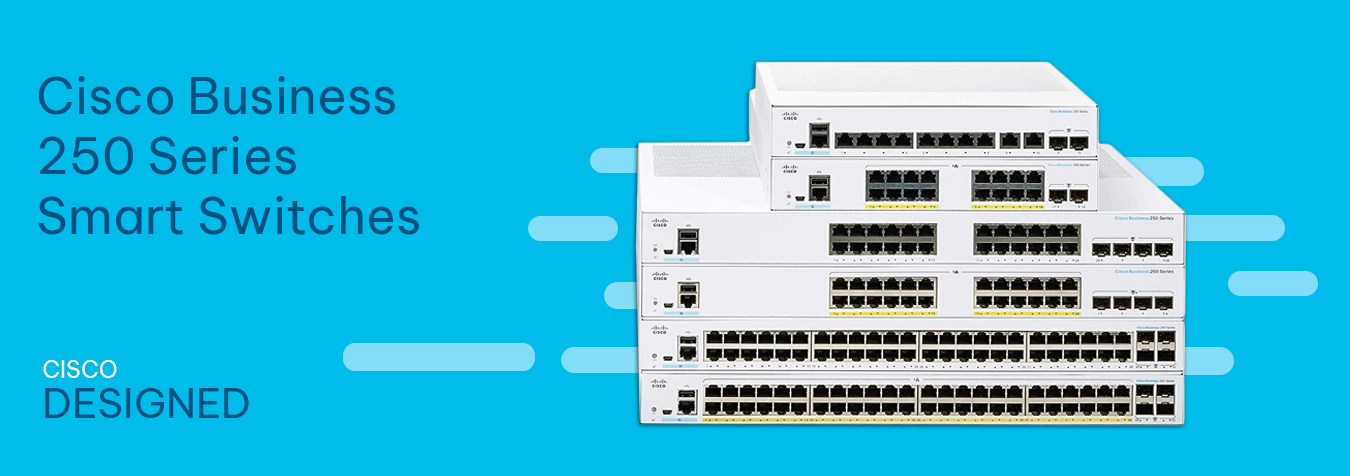

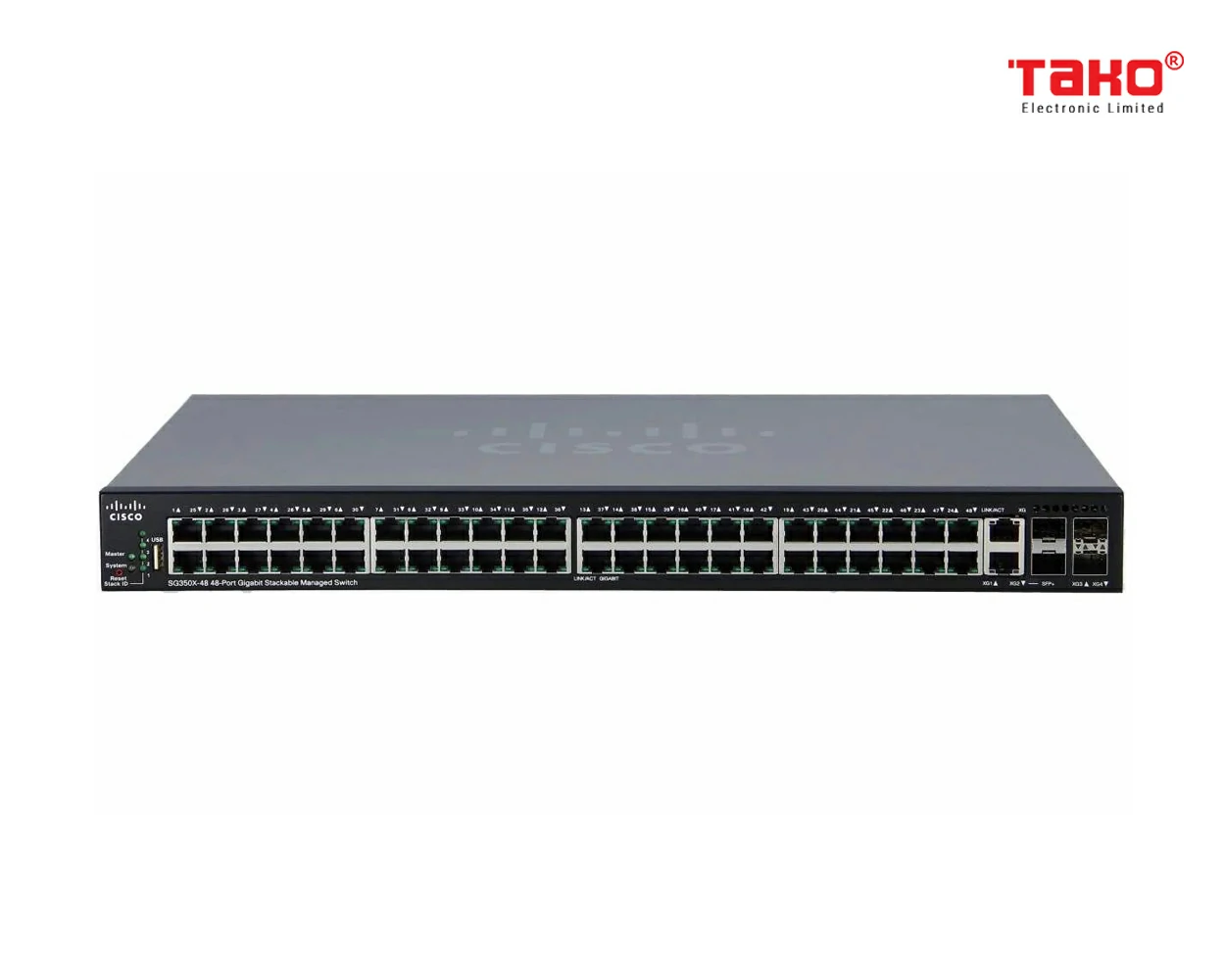
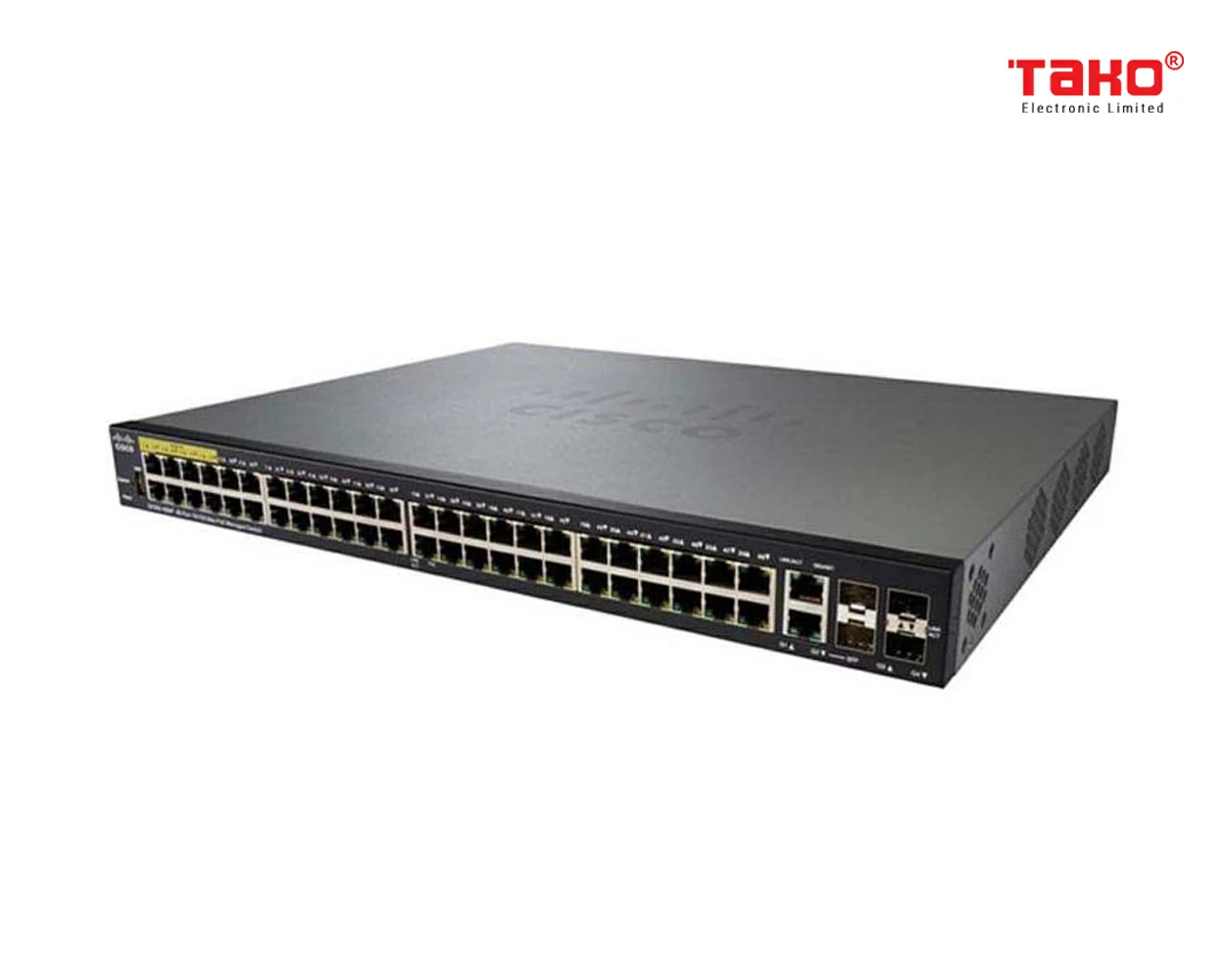
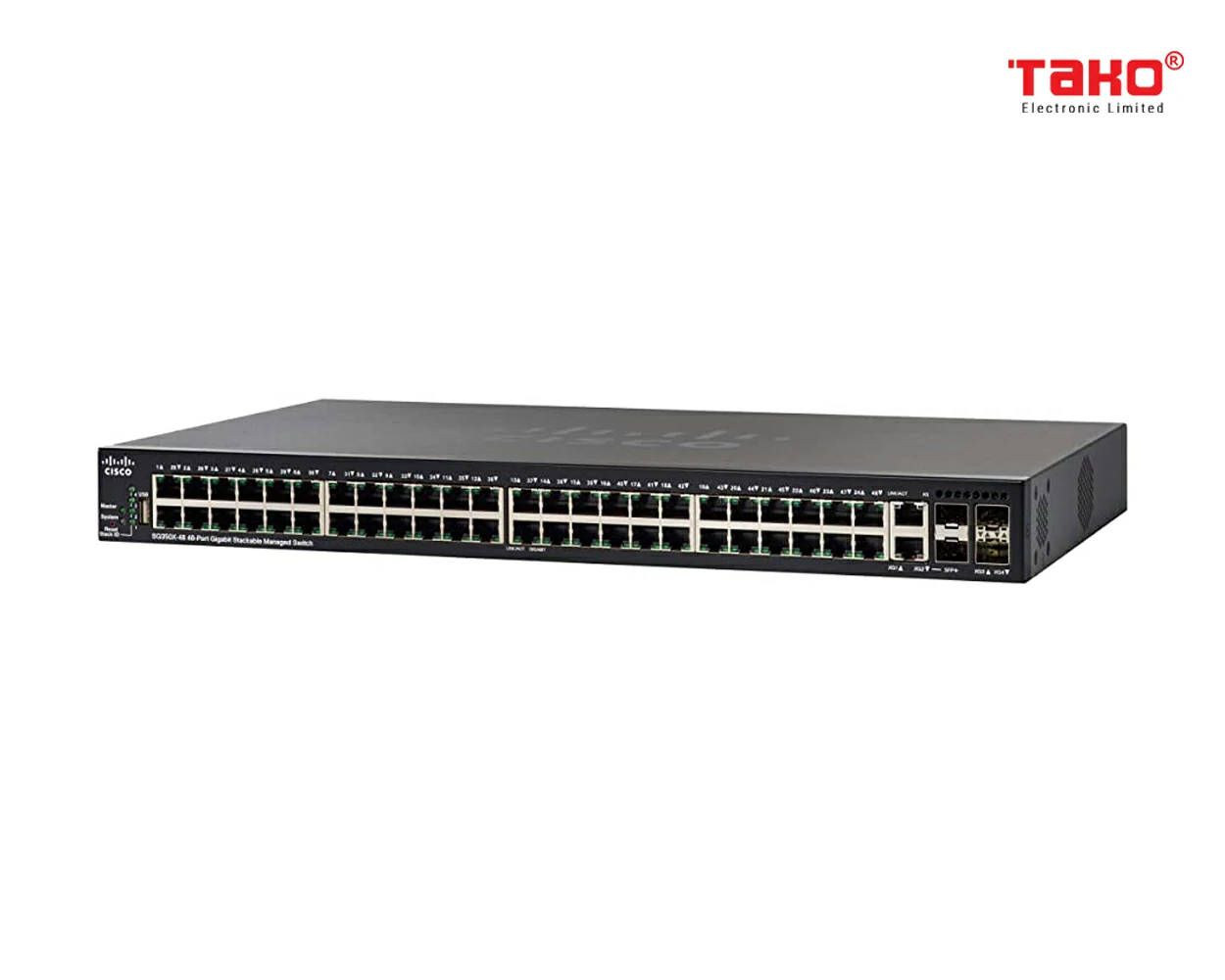
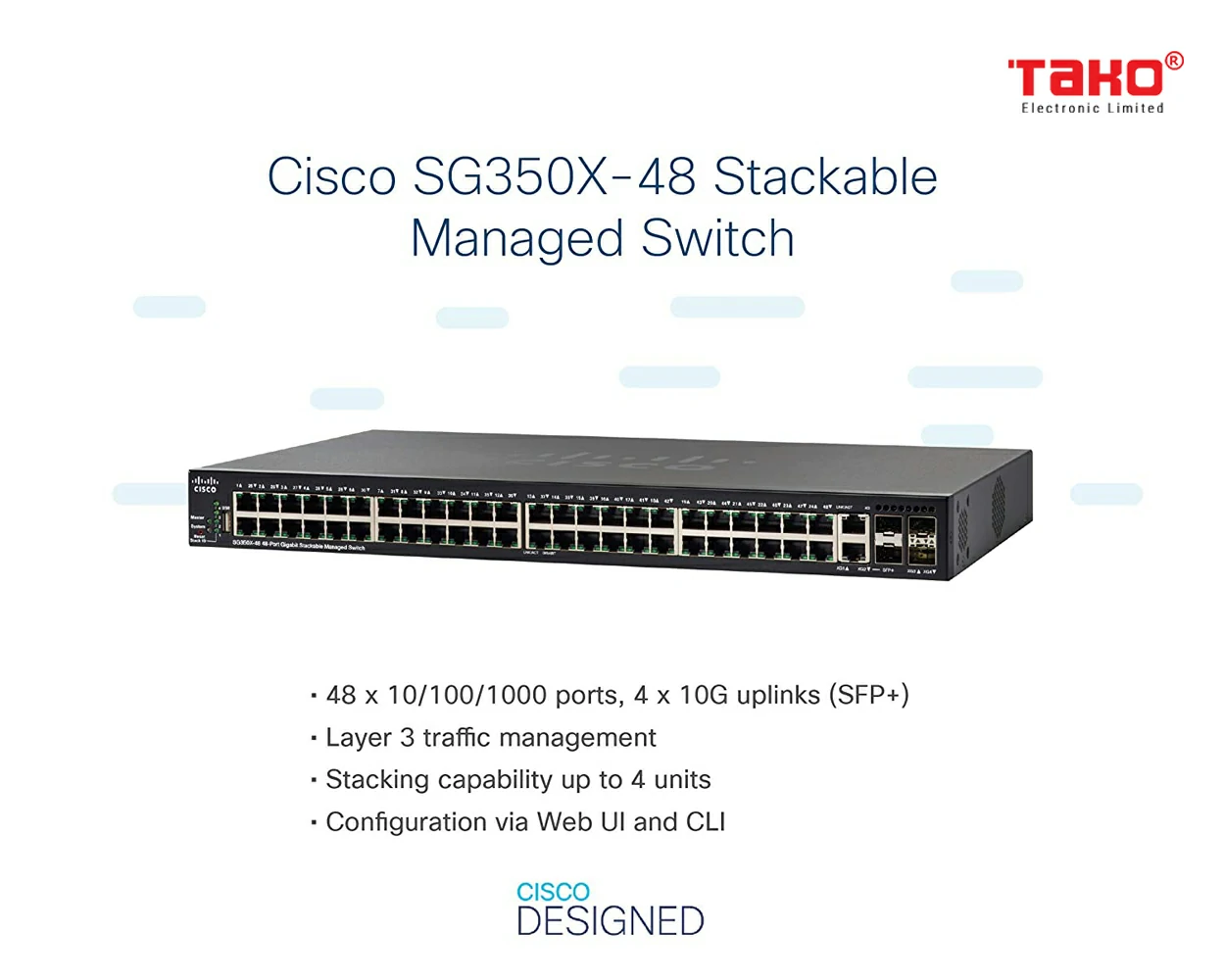
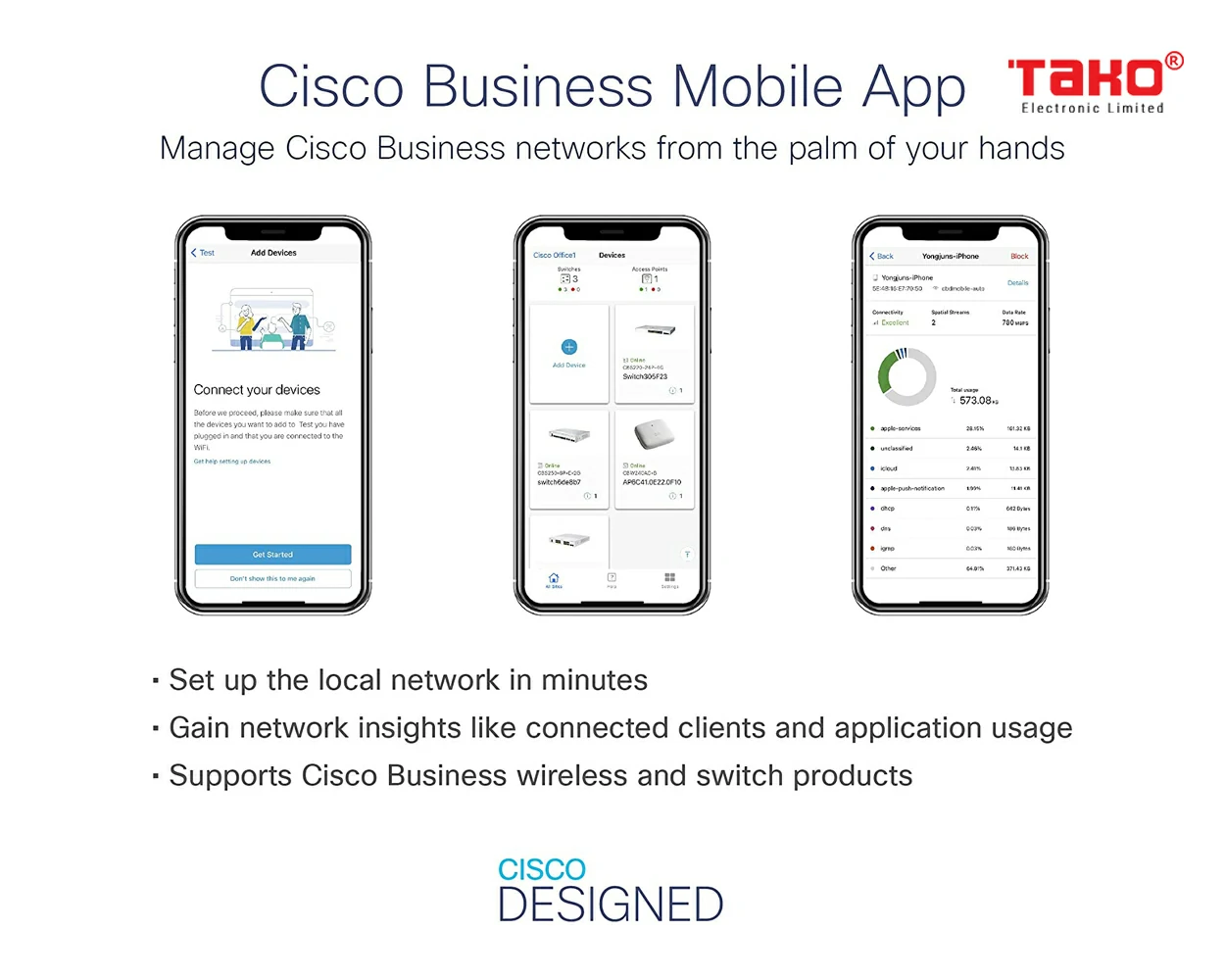
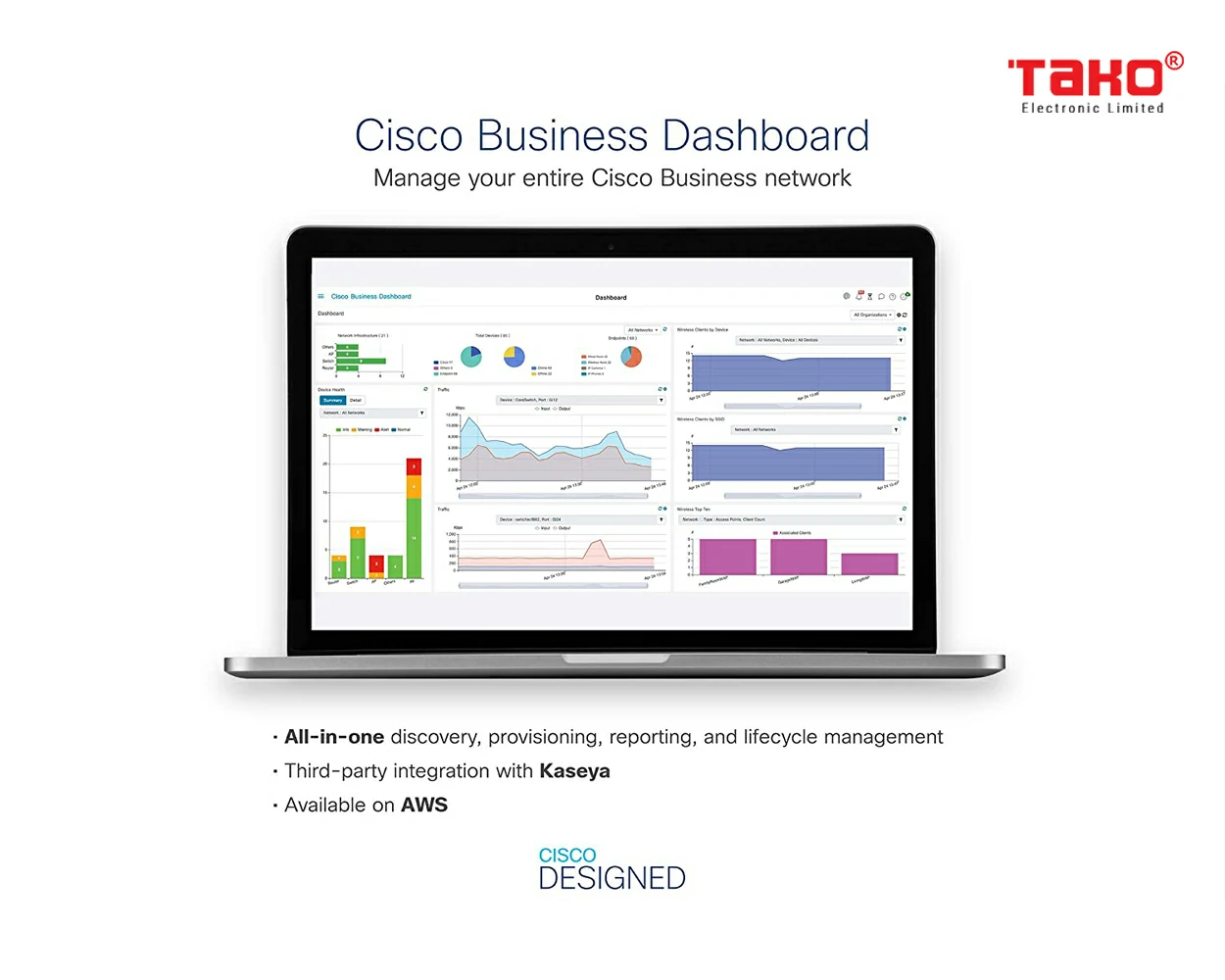
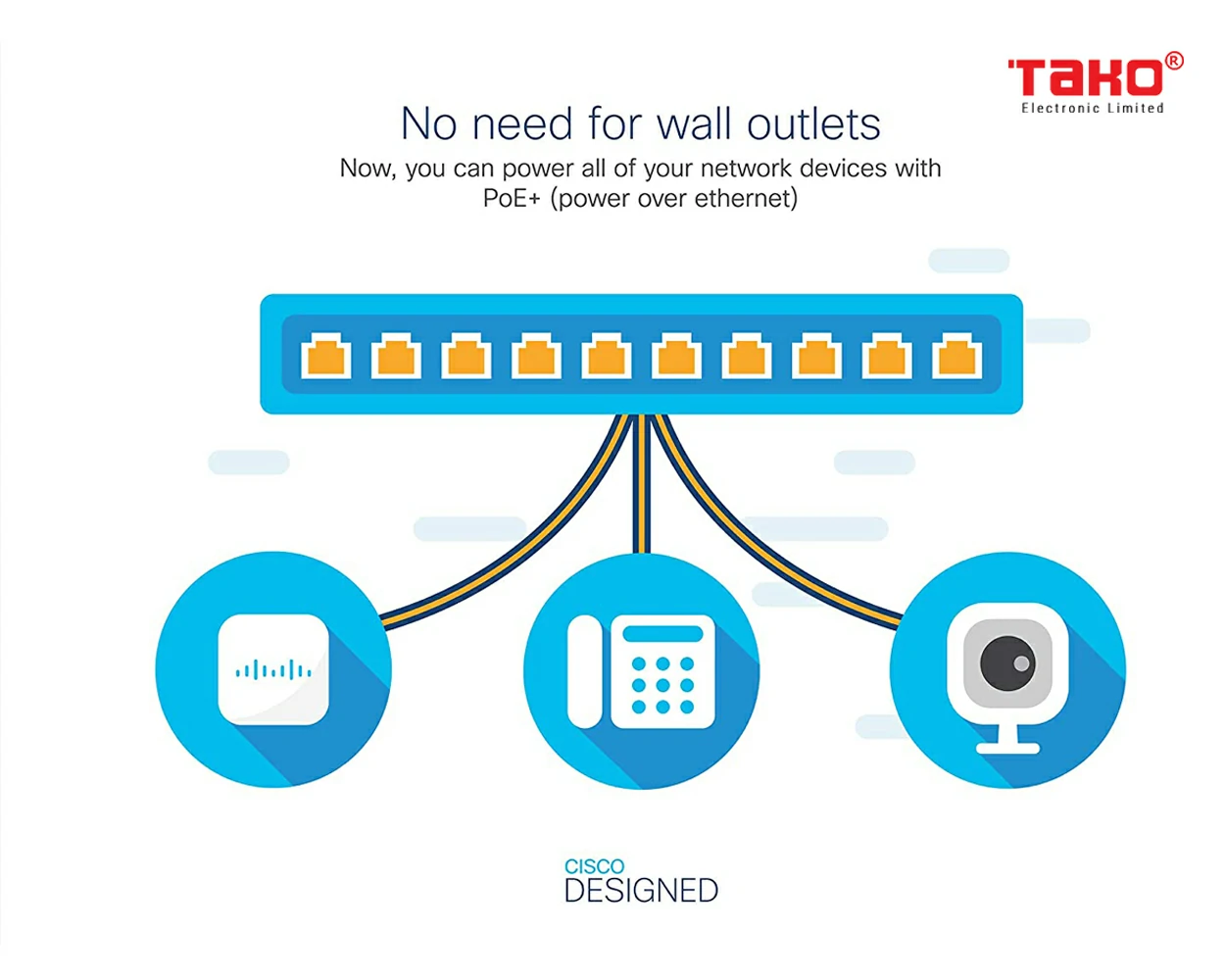
















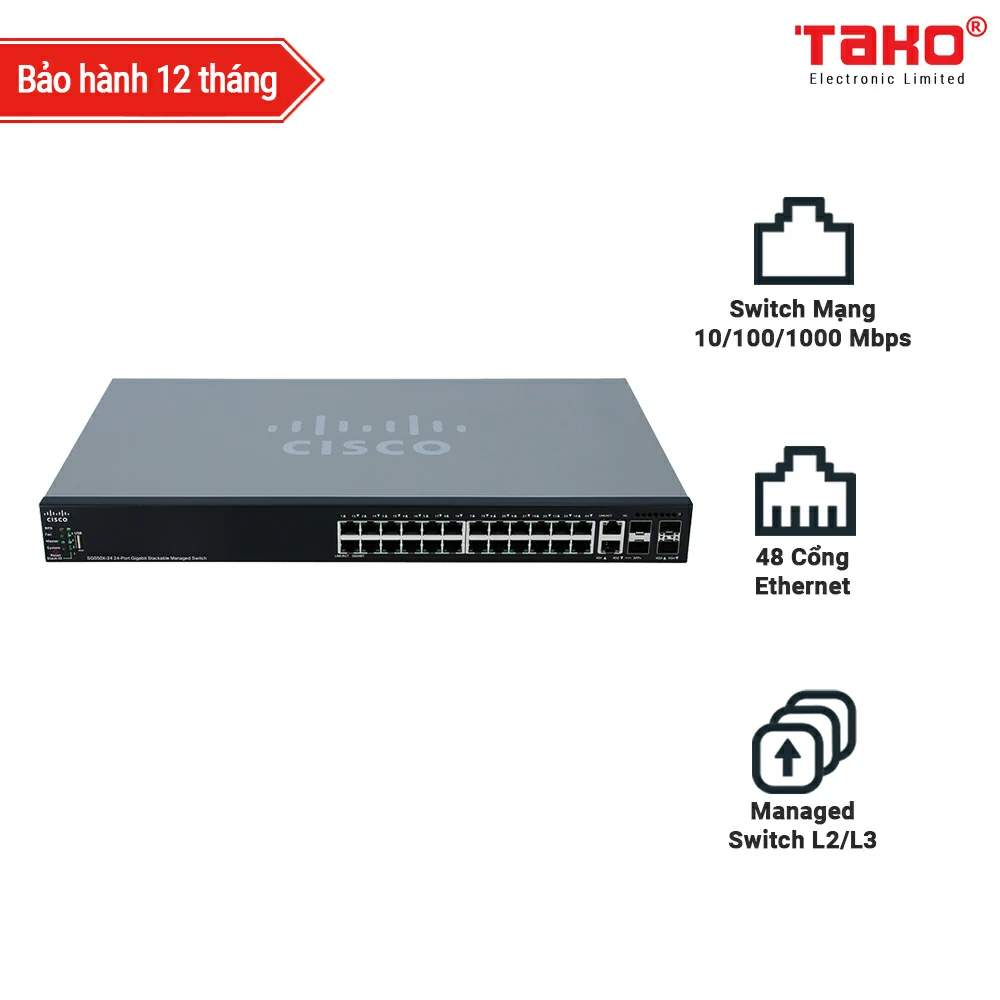
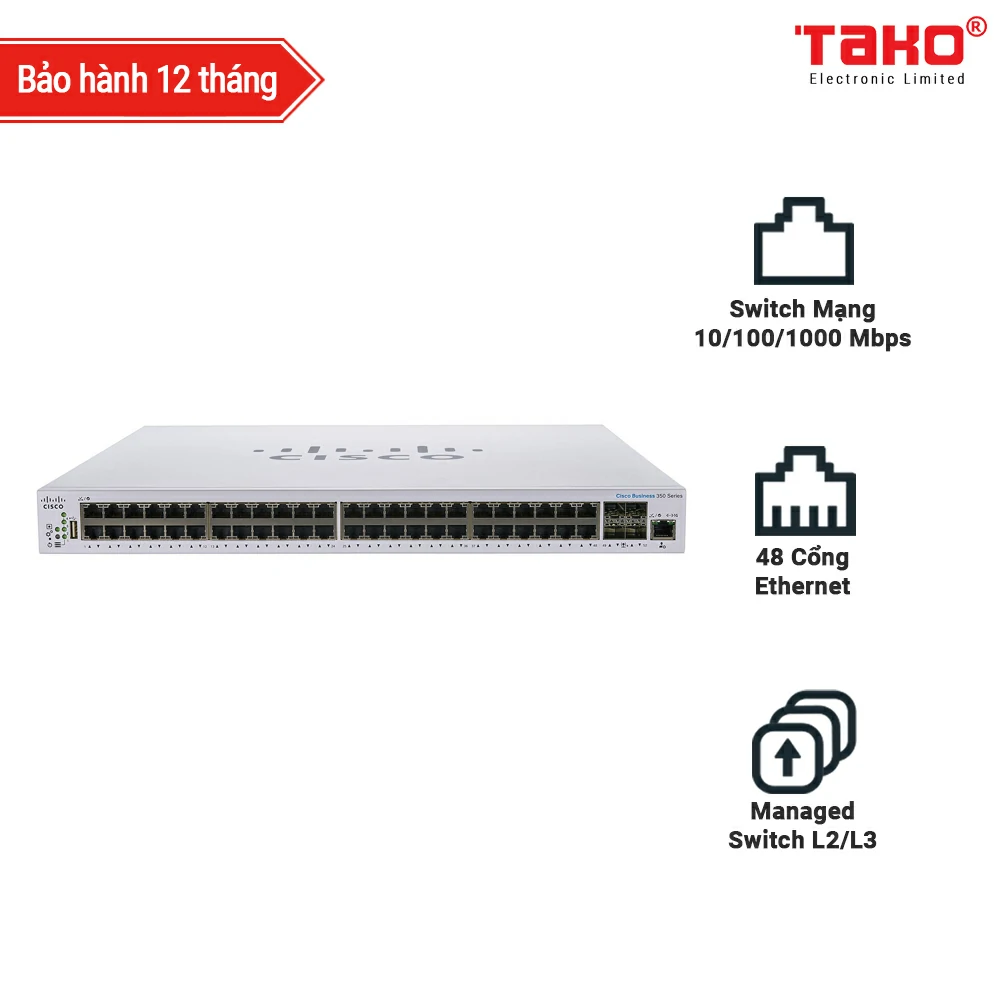
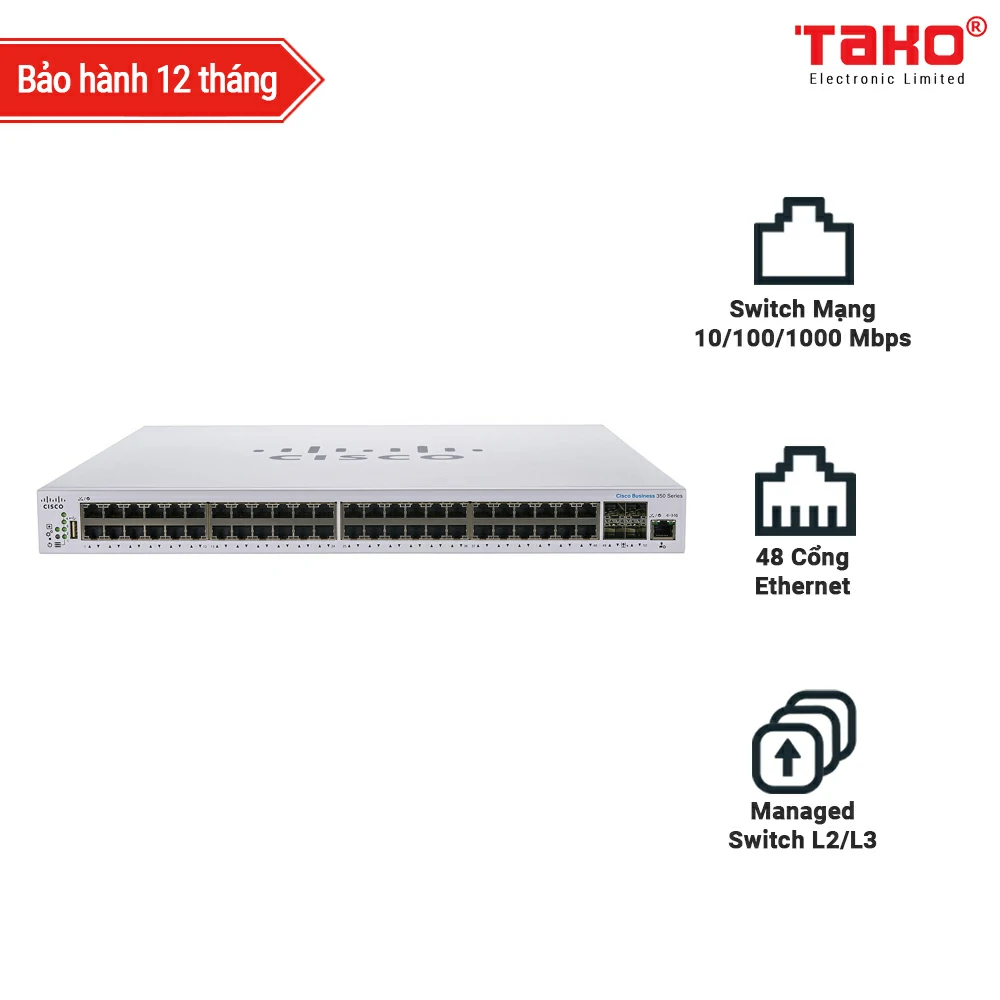
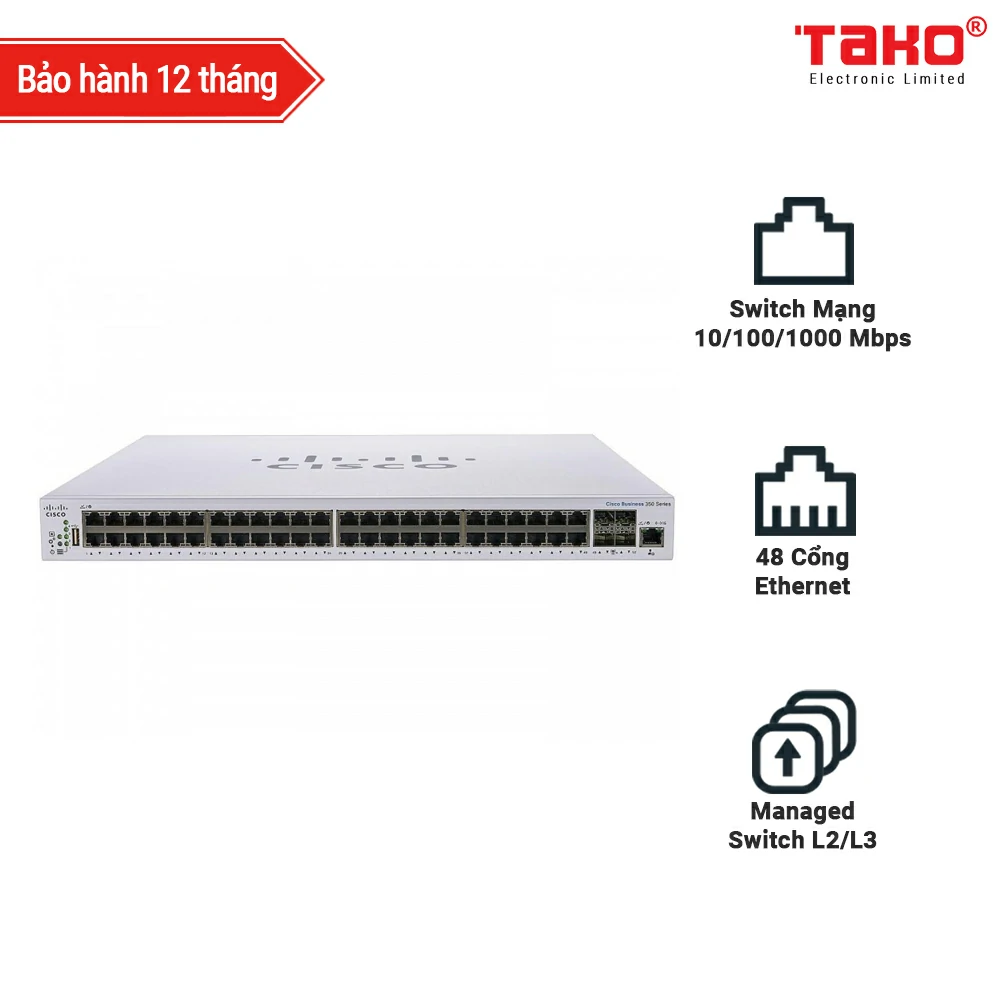
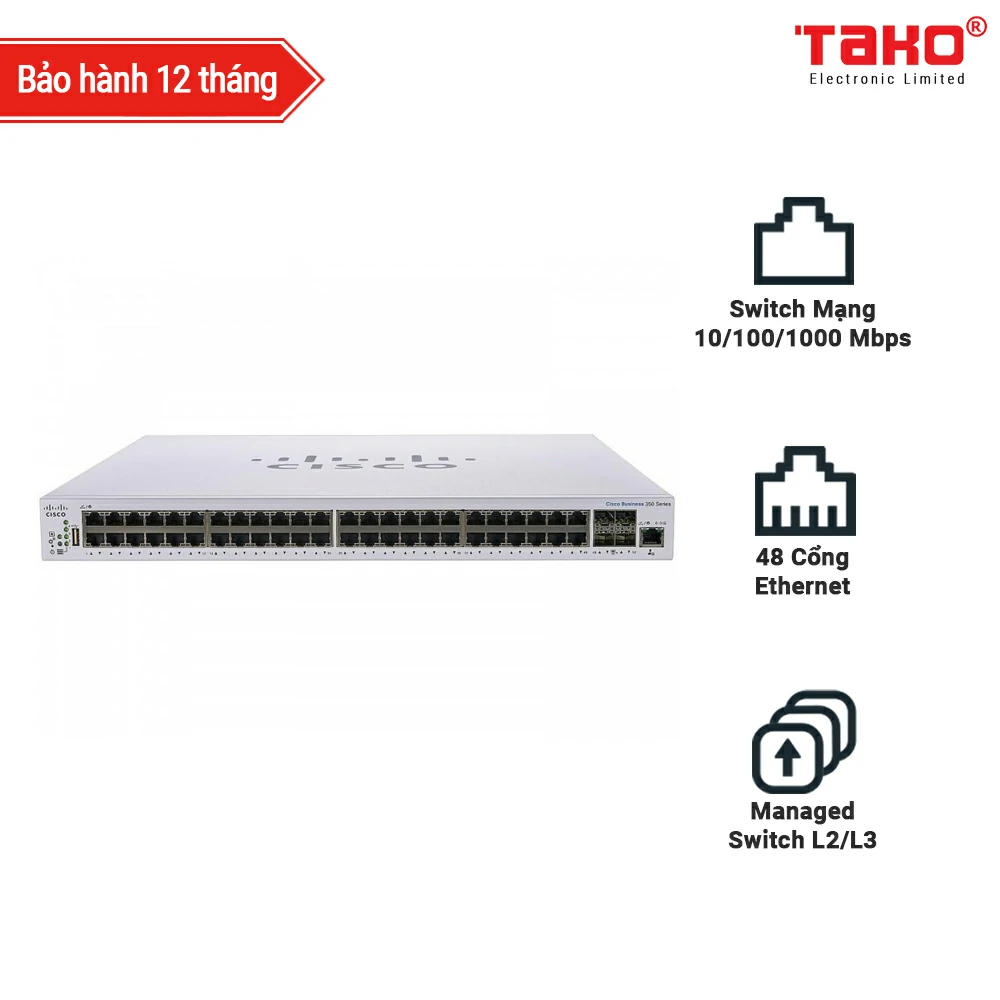
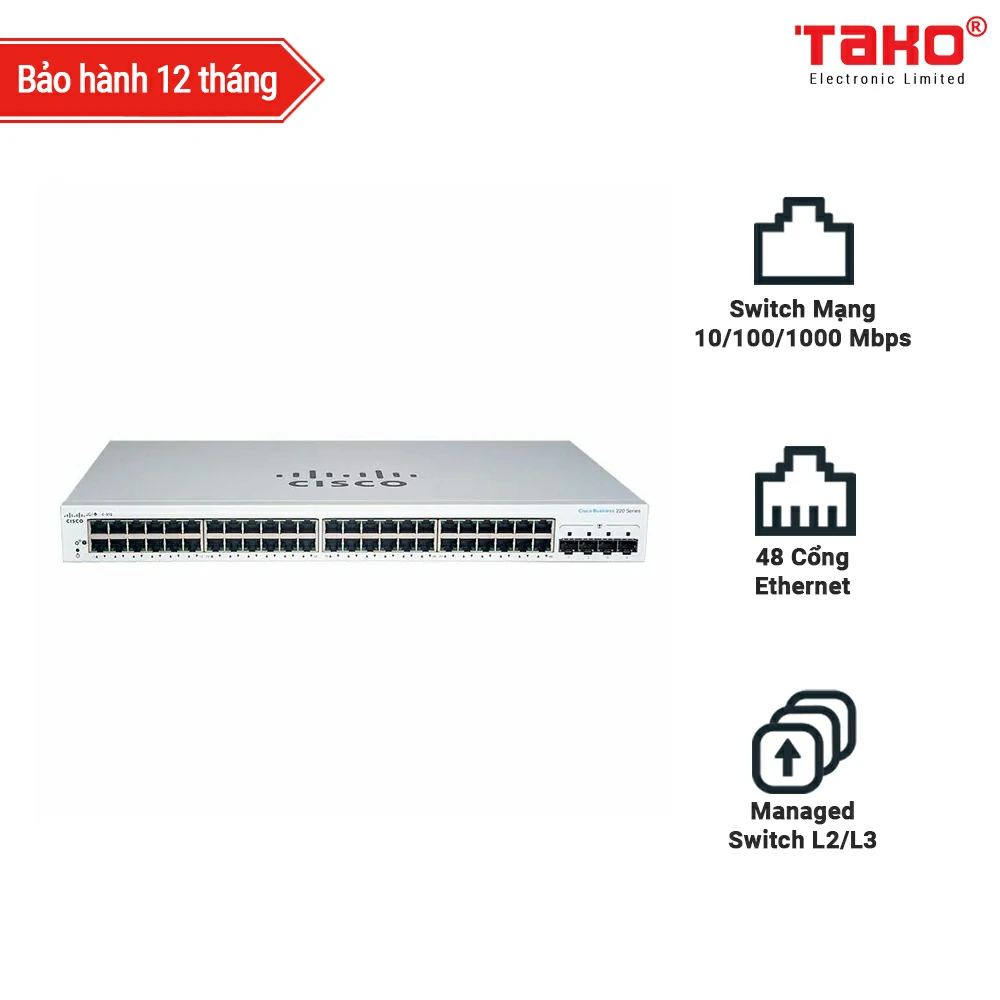
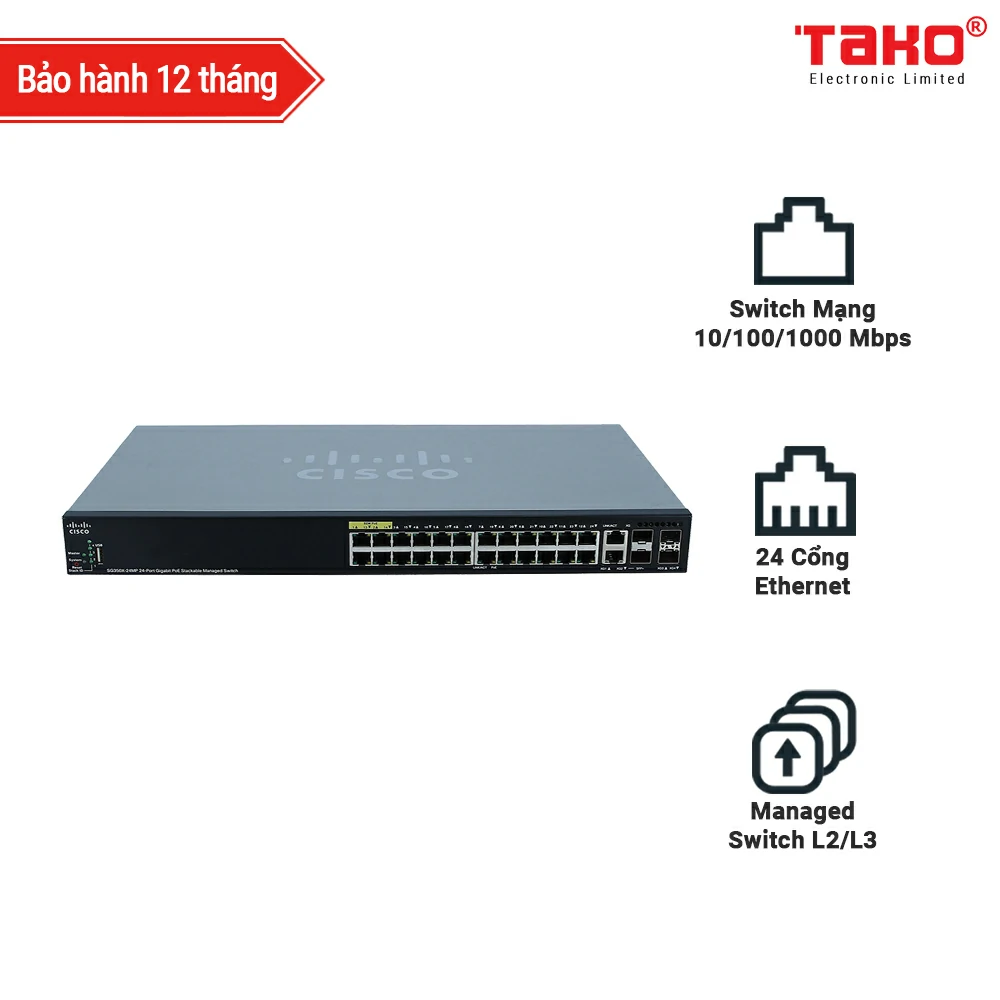
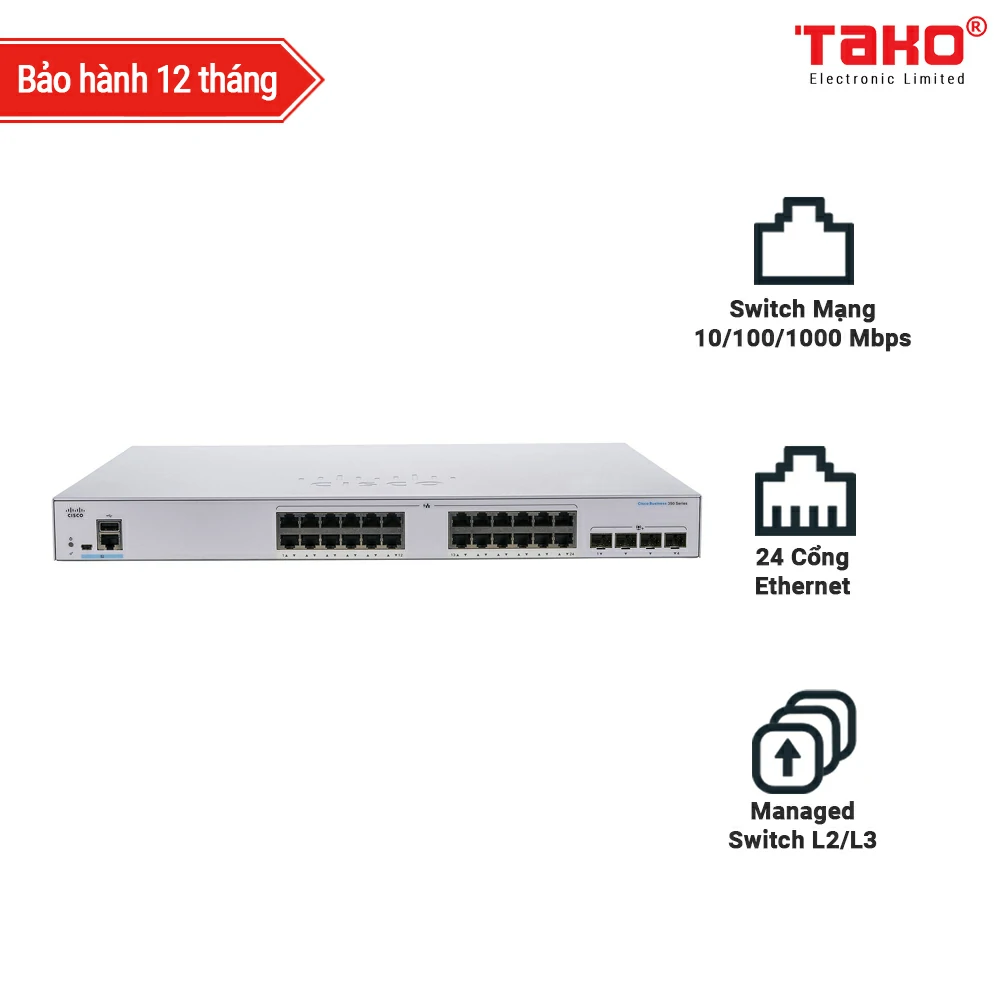
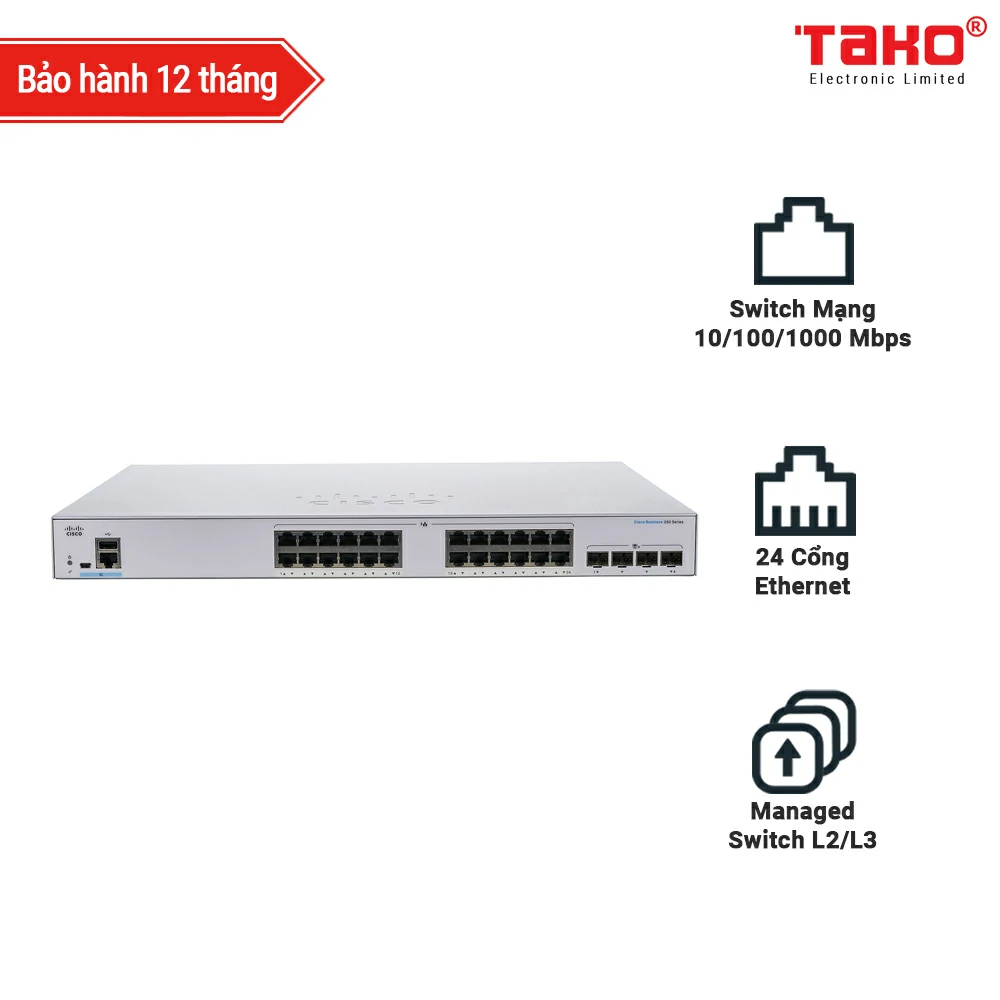
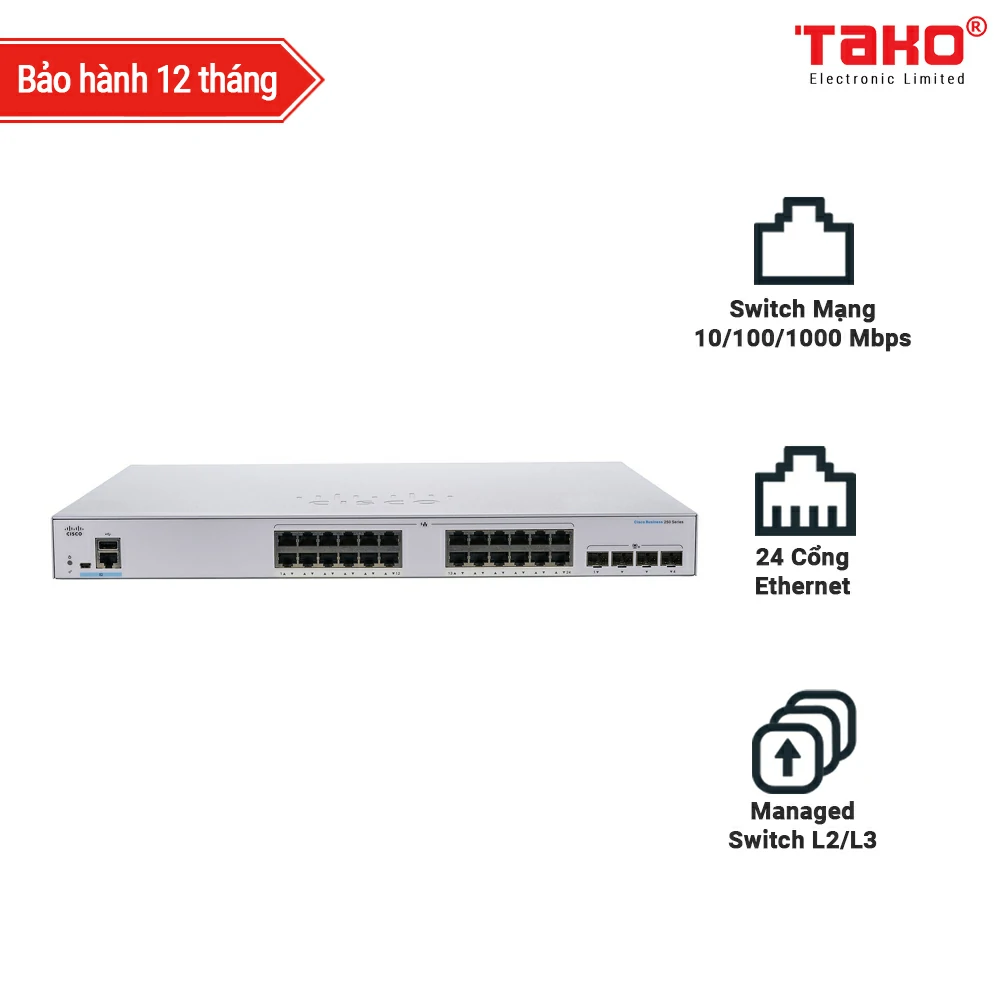
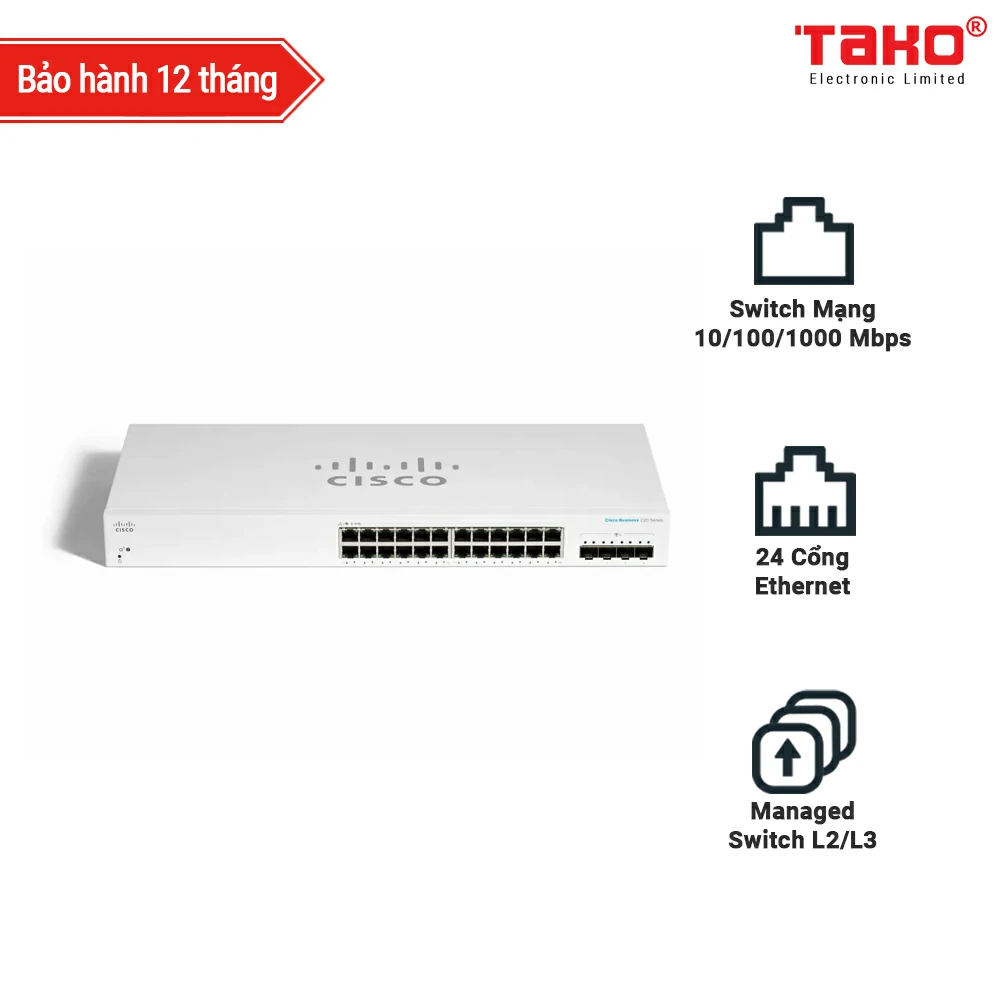
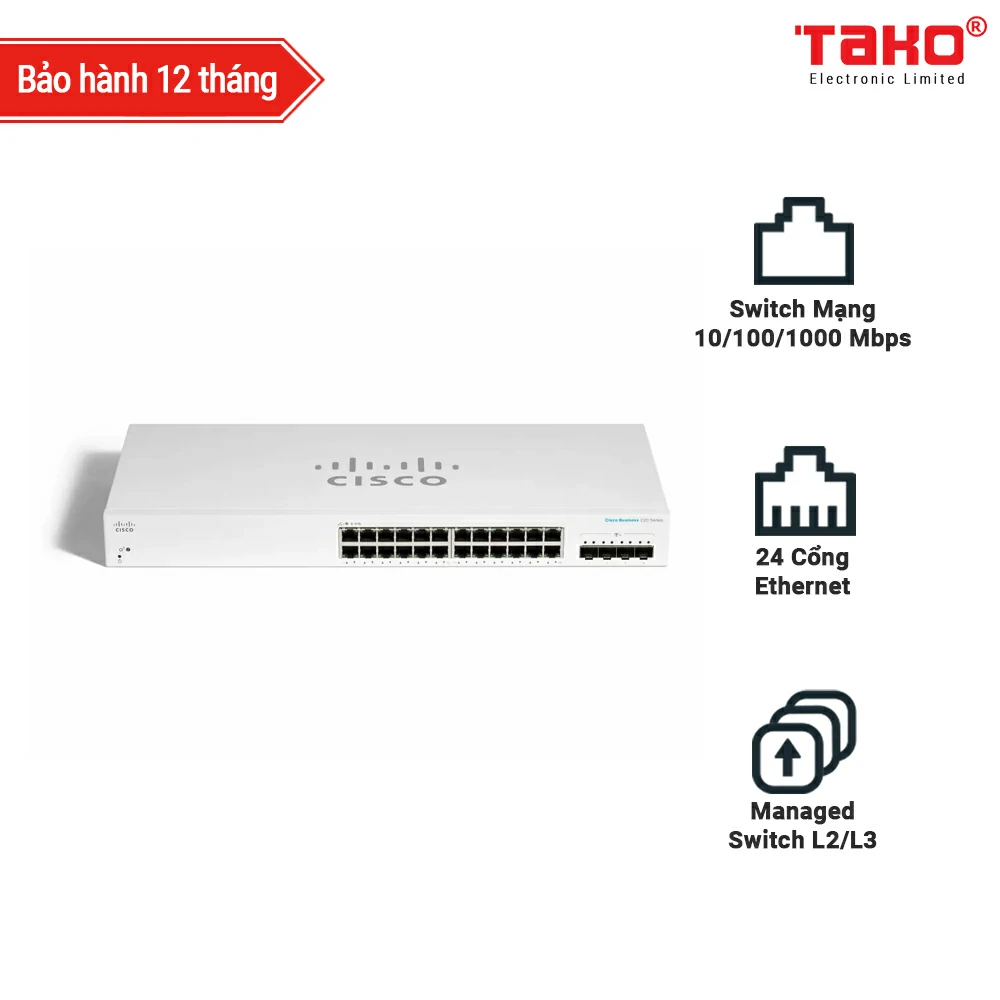

_11zon2024216144641.webp)
